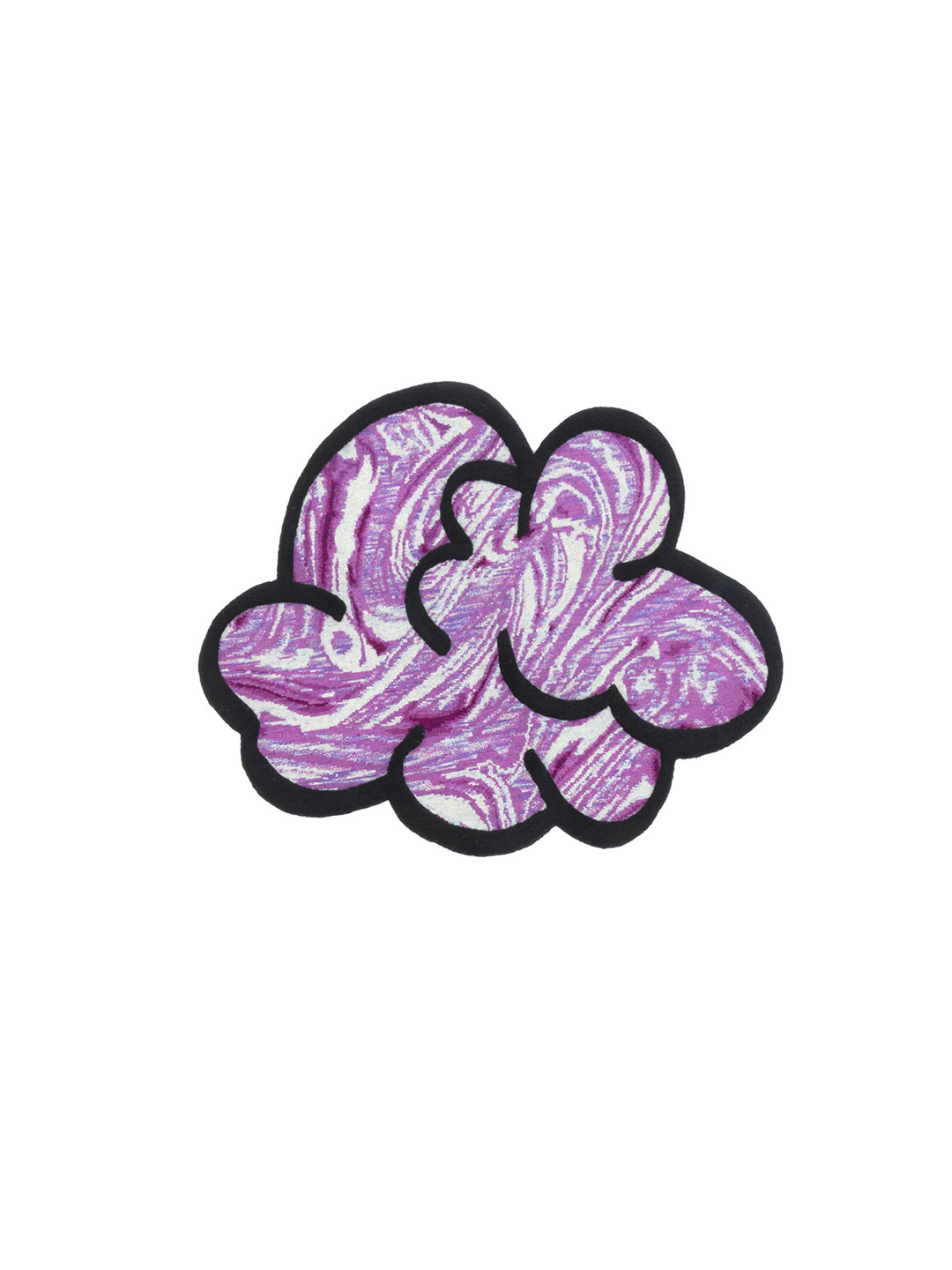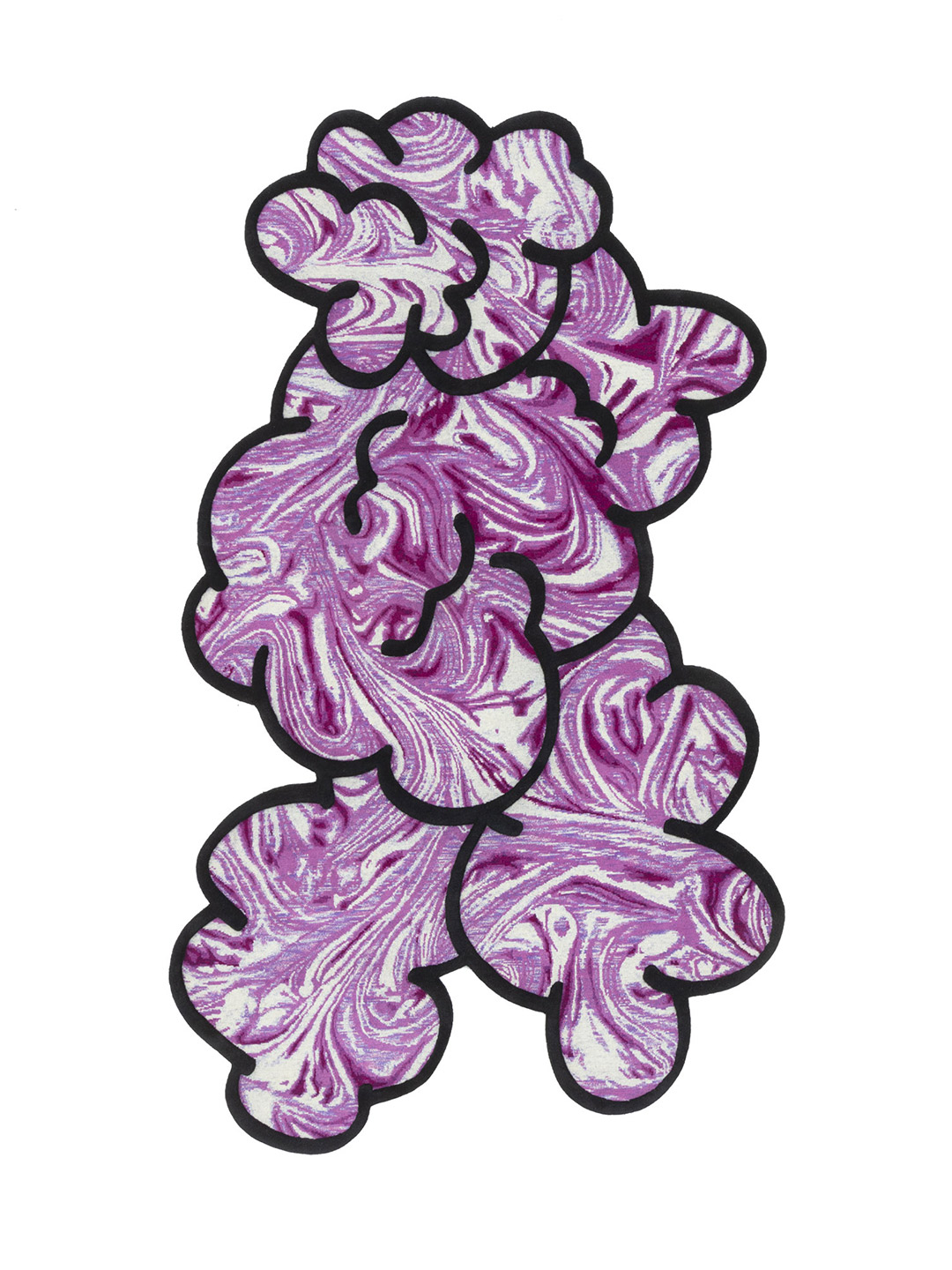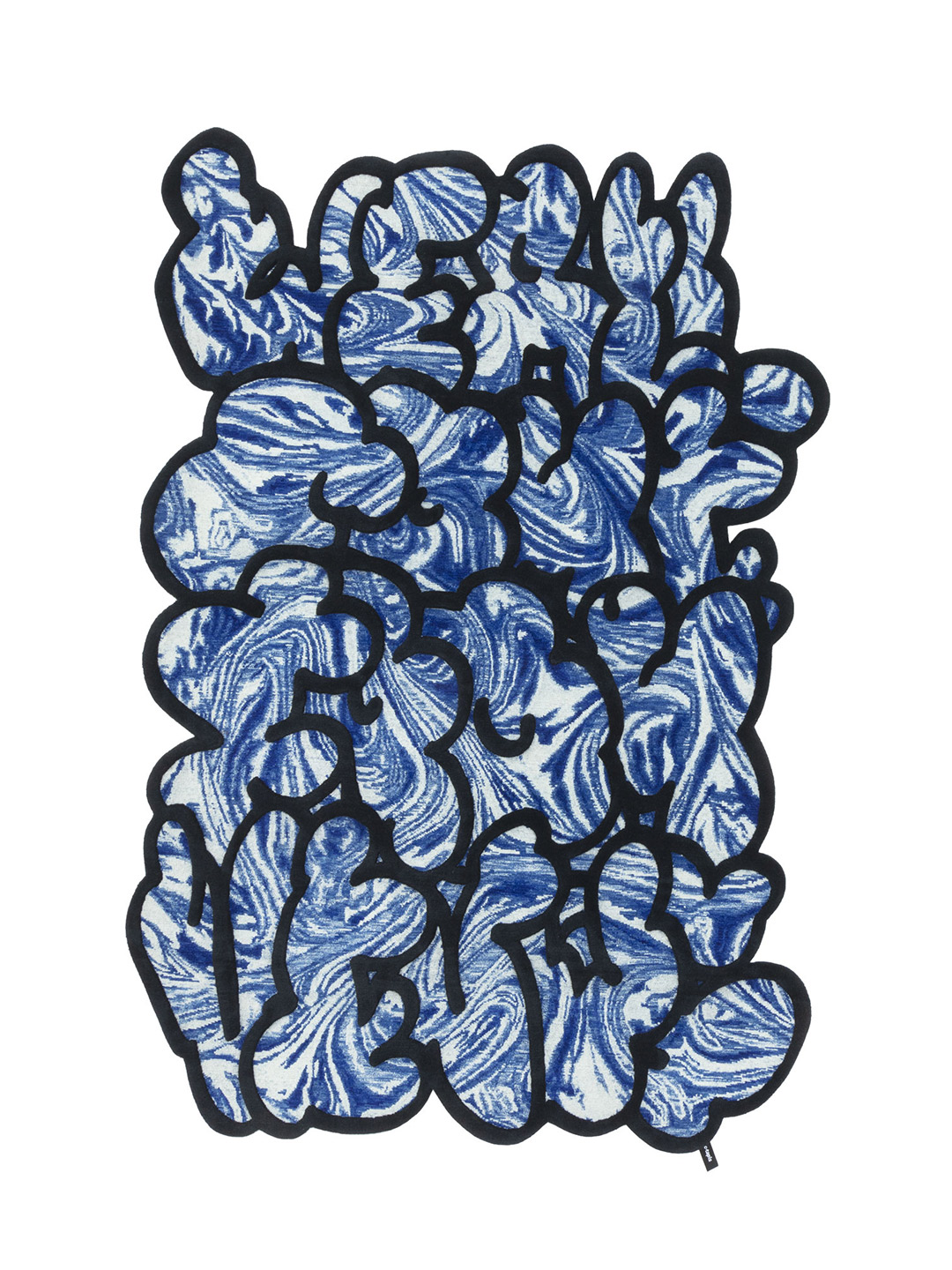As the design cognoscenti migrates from Salone del Mobile in Milan to Cersaie, the name given to the International Exhibition of Ceramic Tile and Bathroom Furnishings (on show in Bologna, in Italy’s north), one particular display has repeatedly captured the eye of attendees. Recognisable for its impressive arrangement of spheres, cylinders, cones, cubes and prisms, the booth, titled Infinite Majesty, was designed by Valencia-based creative consultancy Masquespacio for Roca Tiles – a designer, producer and seller of ceramic tiles. “[It’s] a majestic and surrealistic space that oversteps perspectives and standards with chromatic and material combinations,” say the Masquespacio team, led by founders Christophe Penasse and Ana Milena Hernández Palacios.
Roca’s presence in this year’s edition of Cersaie invites visitors “to pause and ‘listen’ to the walls in the space, and get lost in the curves and lines of its perfect geometry,” the designers explain. They add that the guiding inspiration behind the booth is the porcelain material itself – “and the desire to capture the different hints it can offer” – as well as an evocative reading of the classic architectural order.
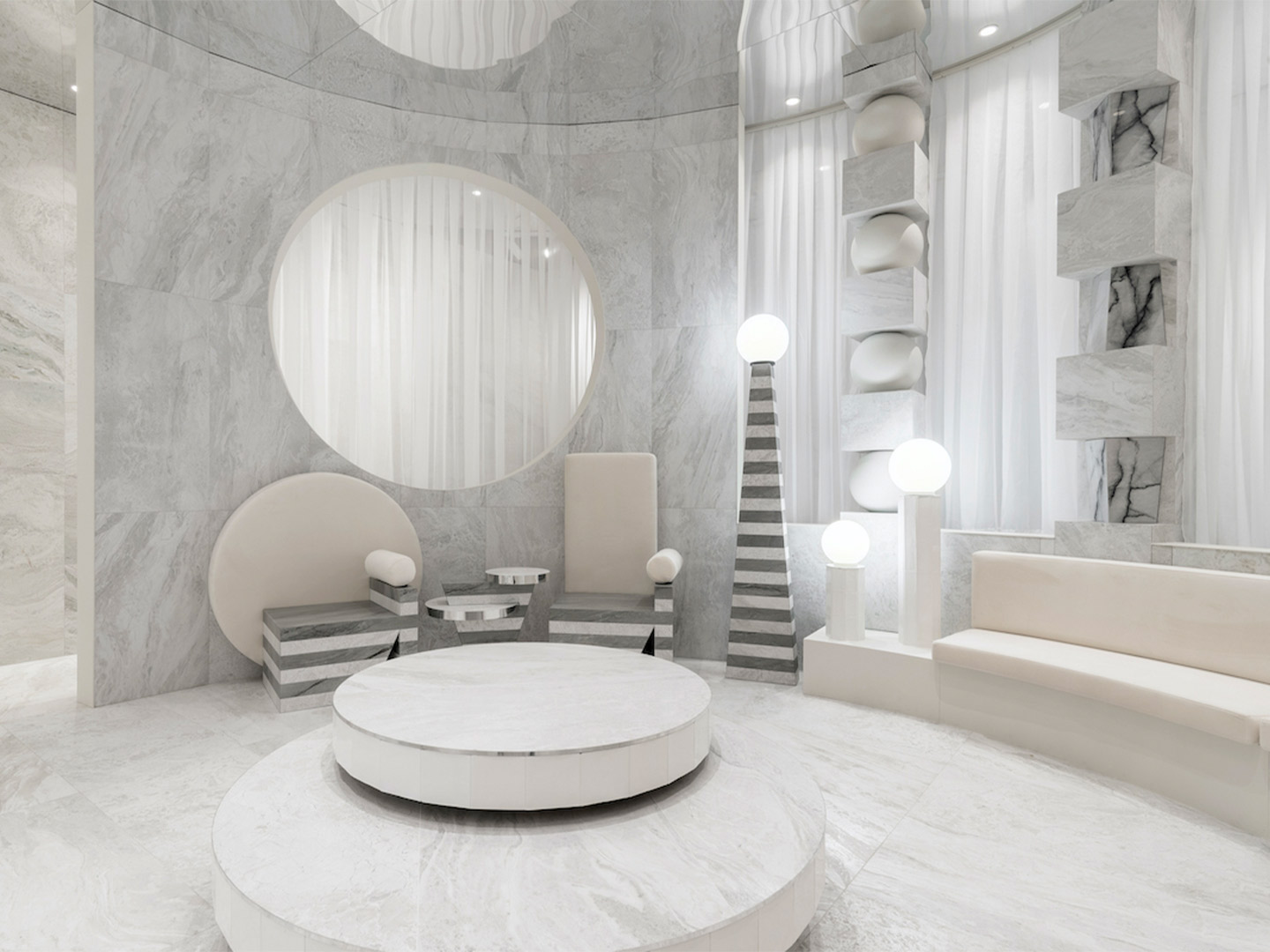
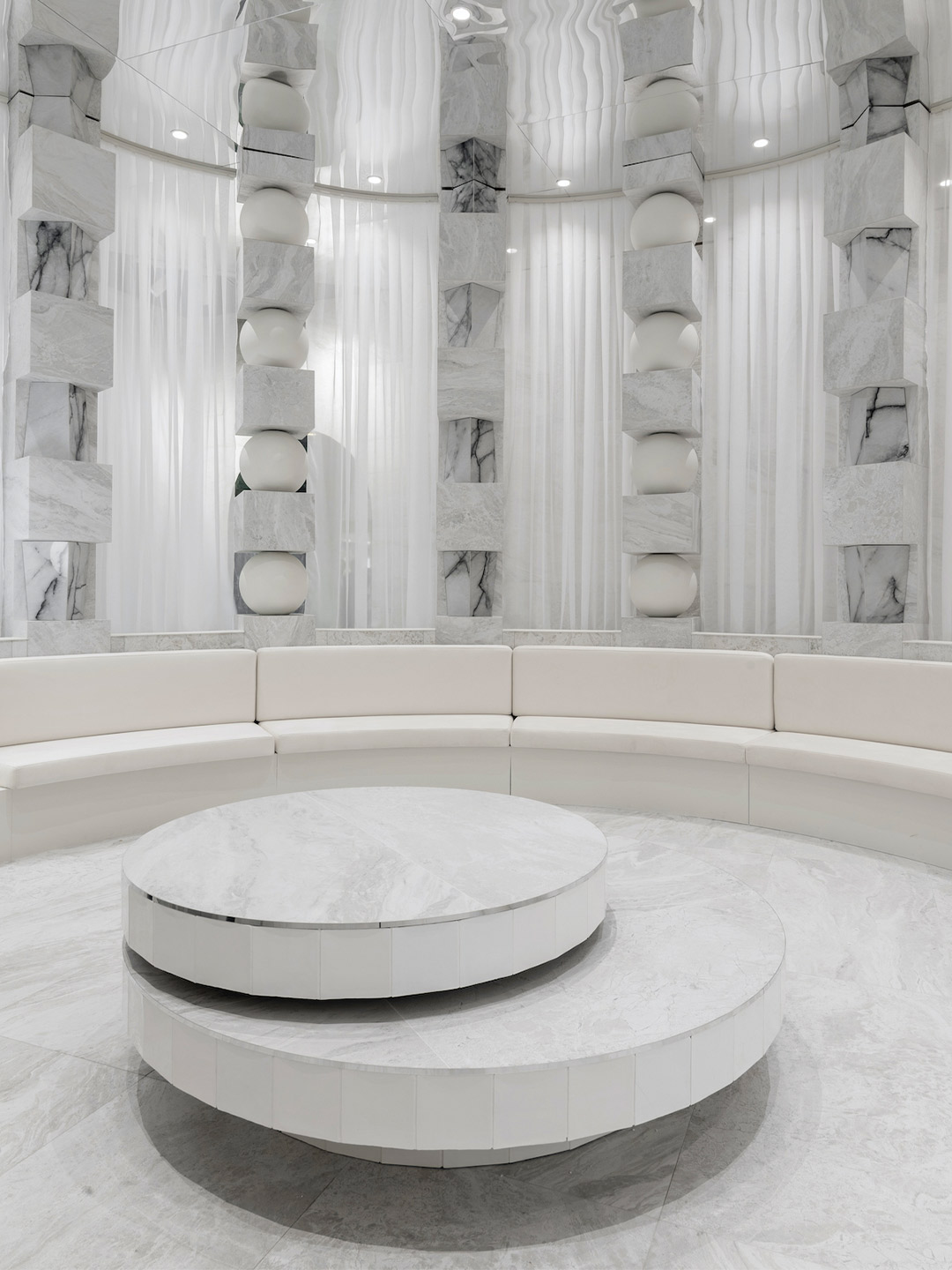
Roca Tiles installation at Cersaie in Italy by Masquespacio
“The space designed for Roca features a strategic distribution of the different elements that will shroud [visitors] in the room,” the designers explain. The spheres and cylinders, cones and cubes join together in polychromatic columns around the central space. Mirrors and curtains reinforce the ethereal atmosphere; a fantastical touch that the Masquespacio team insist makes anyone who enters the room “forget where they are” – even just for a moment.
Breaking the mould of what trade-show spaces might typically look like, the ambitious booth features a striking symphony of white, grey and green-coloured surfaces from Roca’s Arcobaleno, Topazio and Saint Tropez collections. Each porcelain product contains up to 50% pre-consumer recycled content and illustrates a sense of classic nobility, sophistication, balance and serenity.
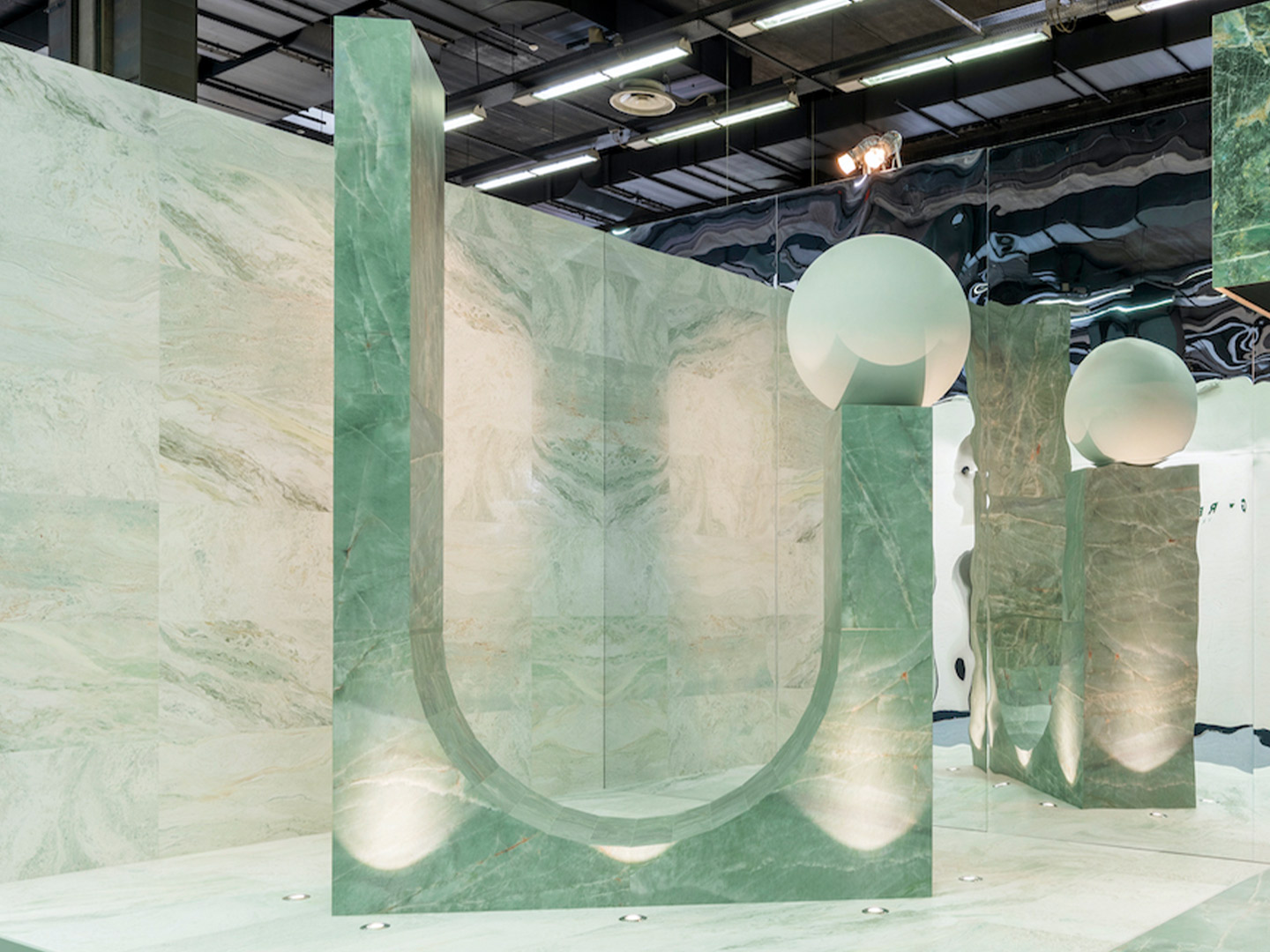
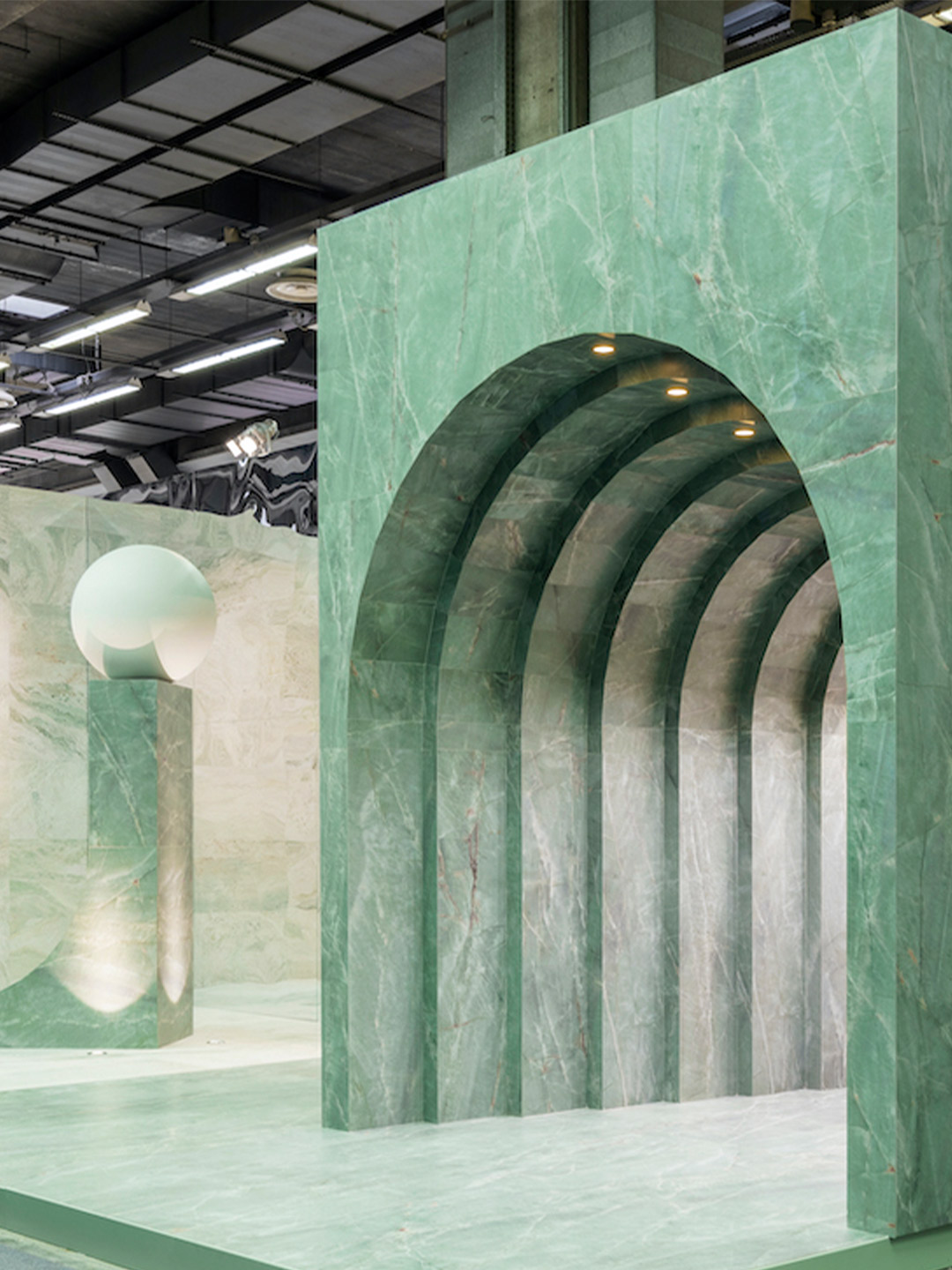
For Masquespacio, the ceramic material also provided an opportunity to create decorative elements that stretch the limits of the product’s application. In the words of Ana, founder and creative director of the design studio, “we often forget that ceramic is so versatile that it can go beyond its traditional use in floors and walls,” she suggests. “The [same] material has been used to create small sculptural and furniture pieces that are integrated in the space.”
Far from the conventional functionality so-often sought in this type of exhibition or trade-only forum, the perspective of the Infinite Majesty project presented one main challenge. “To transform the booth into an artistic and aesthetic space,” Ana says, concluding that it was a task that both Masquespacio, as designers, and Roca Tiles, as a manufacturer, were willing to conquer.
masquespacio.com; rocatiles.com
We often forget that ceramic is so versatile that it can go beyond its traditional use in floors and walls.




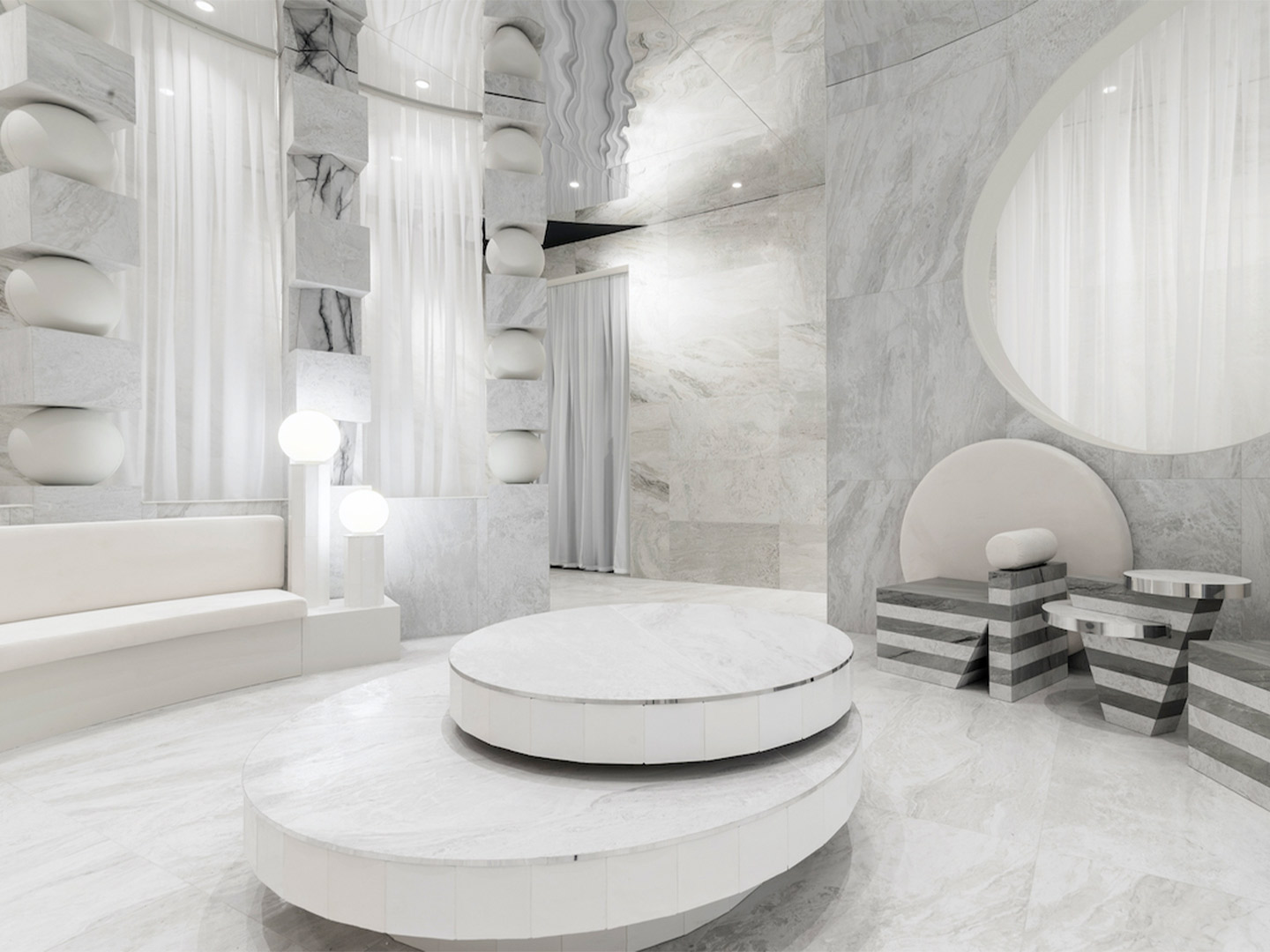
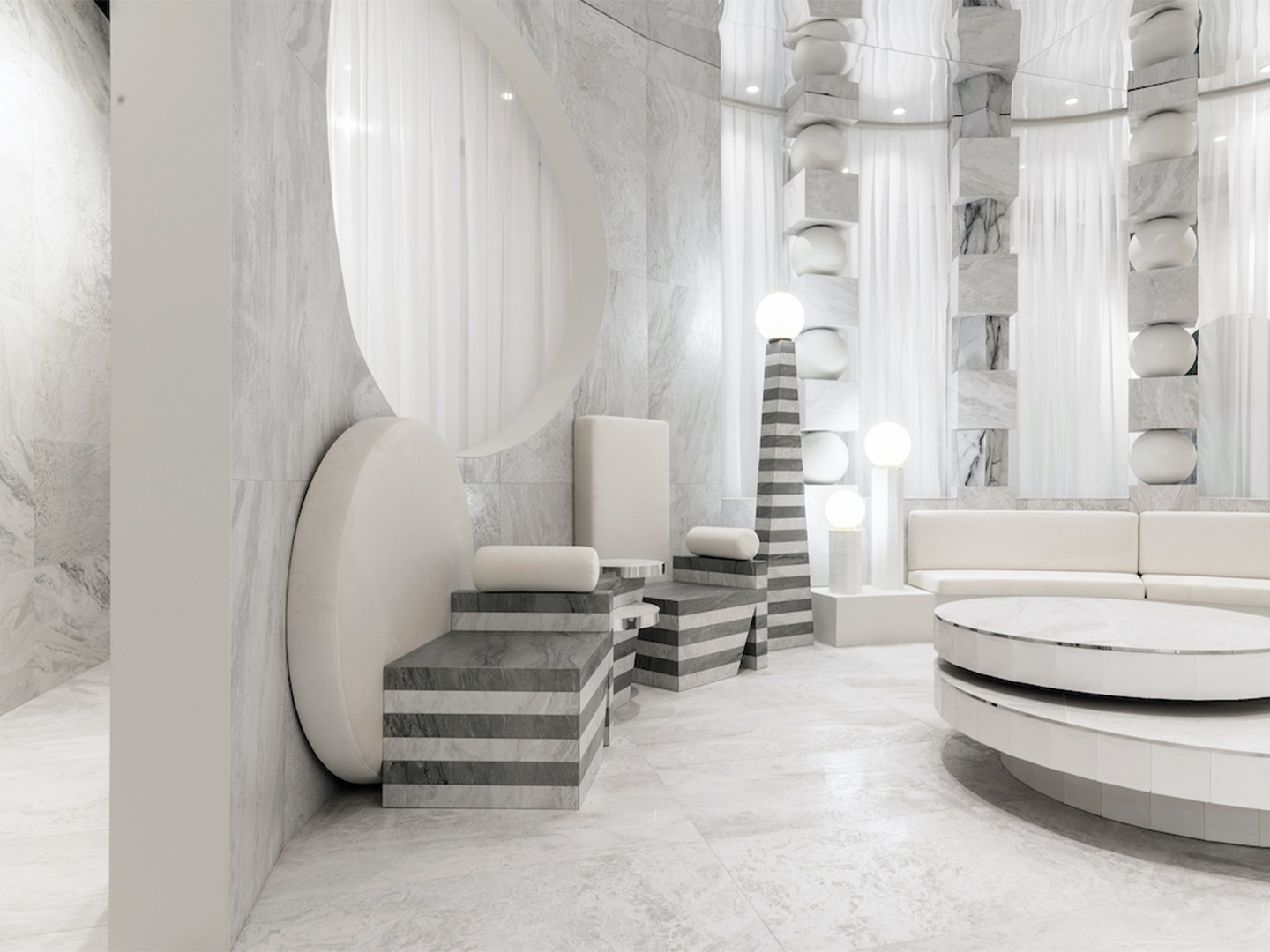
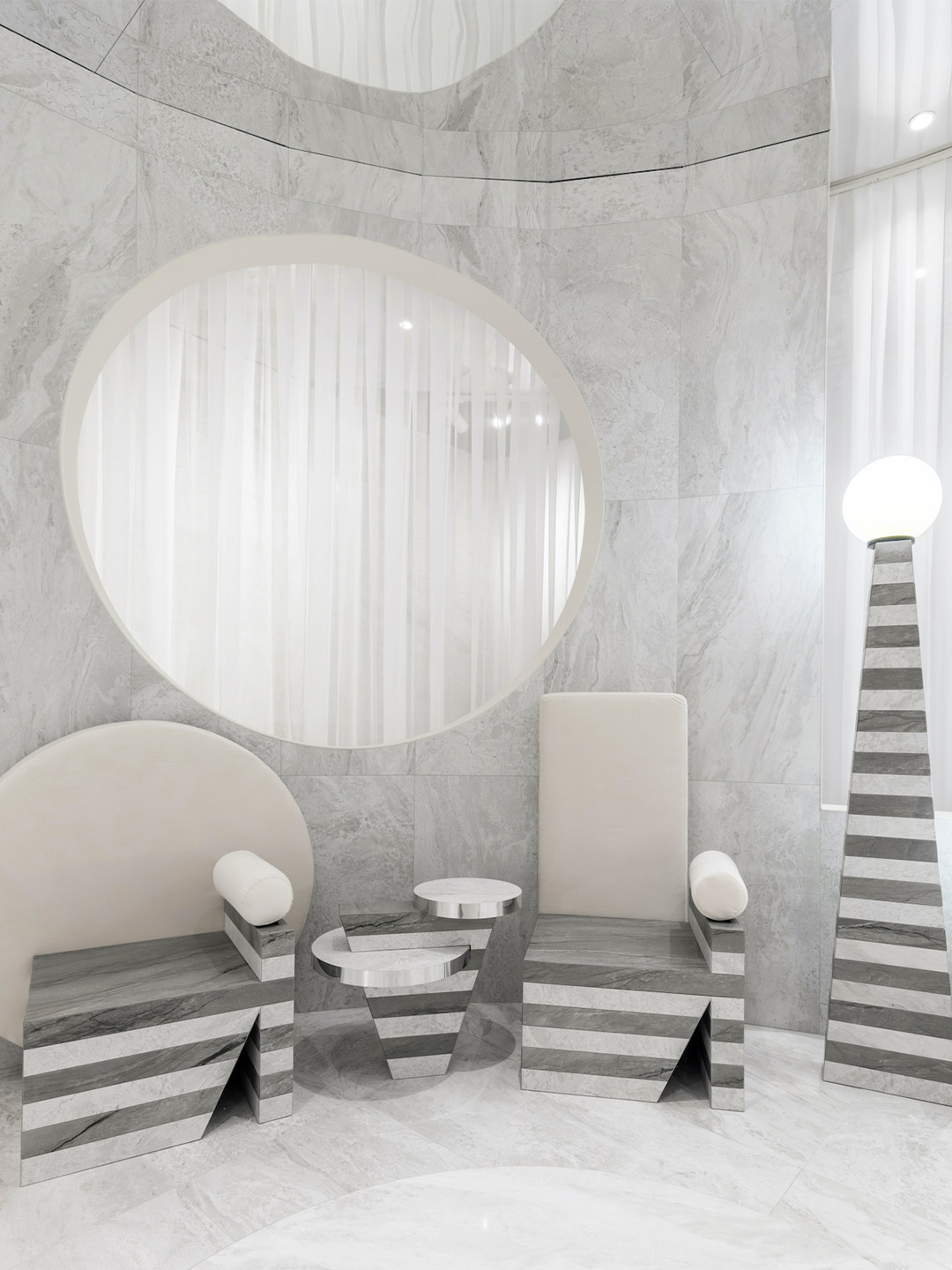
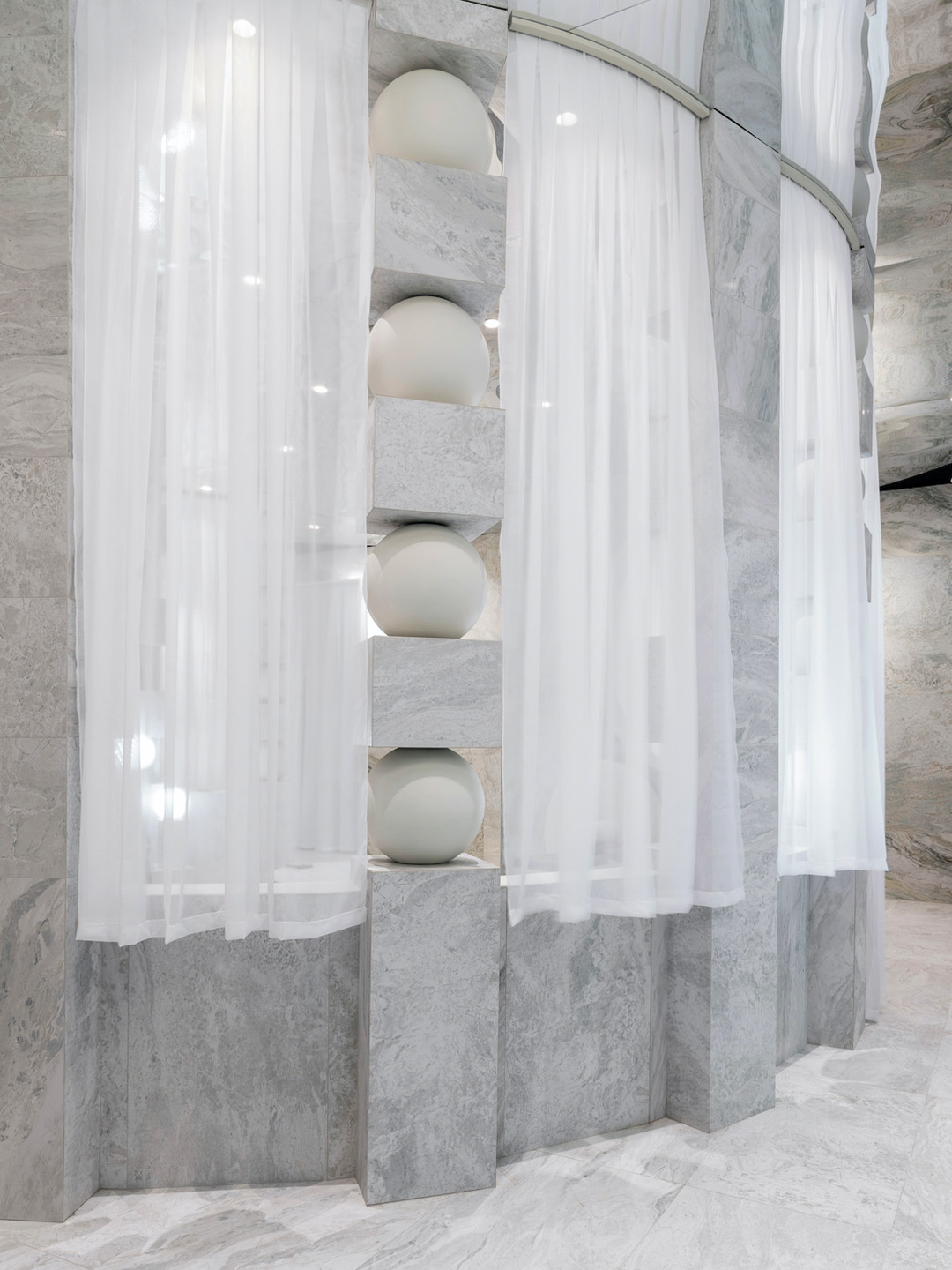
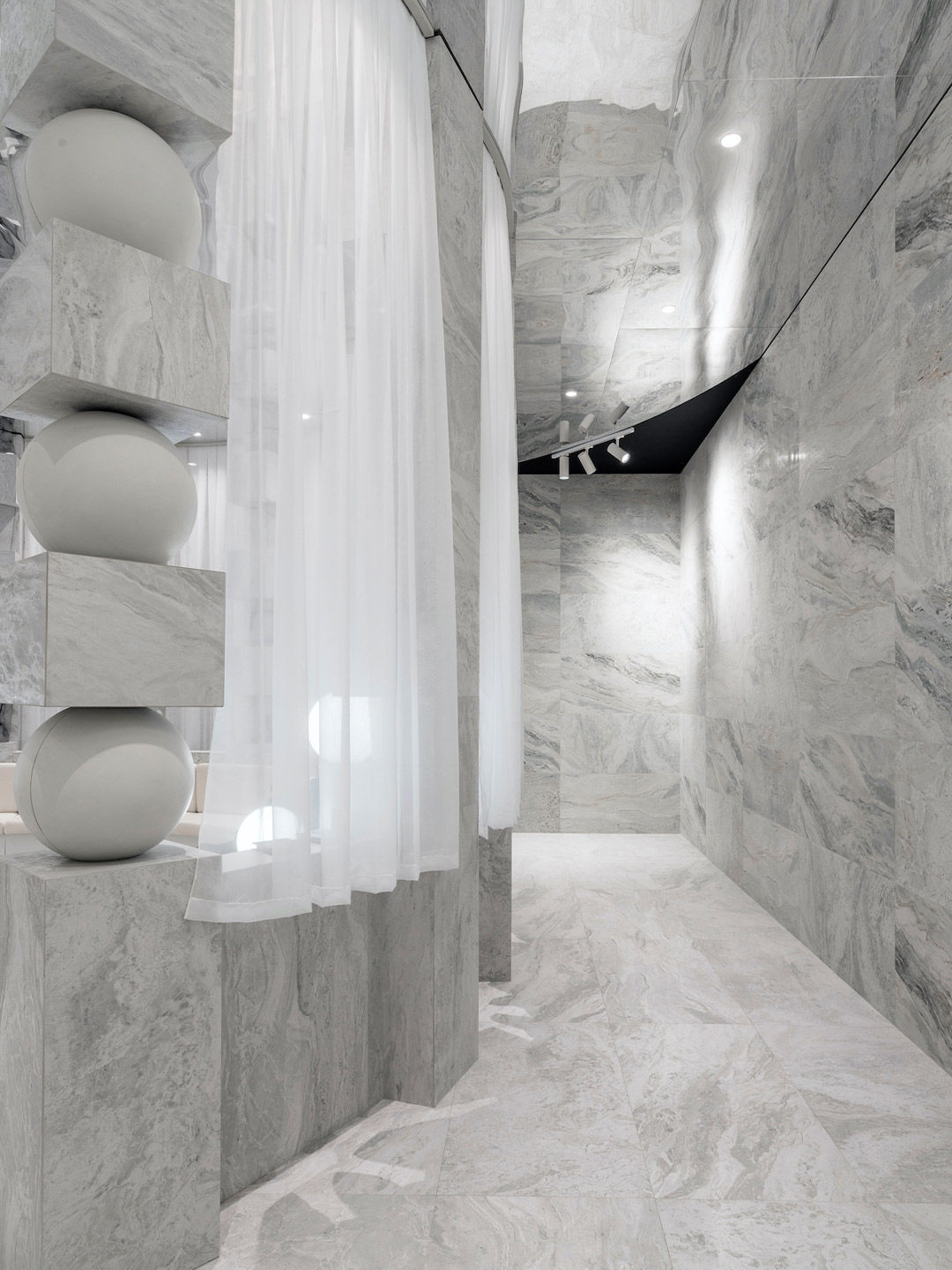
Also in Italy, Masquespacio designed the Bun burger restaurant in Milan and in Turin. Near Florence, famed Italian ceramics-maker Bitossi has opened a museum displaying its 5000-piece catalogue. Catch up on more hospitality architecture and design and retail design, plus subscribe to receive the Daily Architecture News e-letter direct to your inbox.
Related stories
- Resa San Mamés student accommodation in Spain by Masquespacio.
- The bar and restaurant at La Sastrería in Valencia by Masquespacio.
- Mama Manana restaurant in Kyiv by Balbek Bureau.
- Gold ‘n’ arches: Bun burger restaurant in Milan by Masquespacio.
Making its debut during this year’s Milan Design Week, Venus Power is a collection of rugs by Patricia Urquiola created for Italian design company cc-tapis. The collaboration between designer and maker surveys the idea that all people – regardless of gender – carry a level of femininity within them, and encourages it to be embraced, listened to and accepted.
Expressed through the metaphor “We all come from Venus”, the message conveyed by Venus Power is equal parts strong, powerful and joyous, says Fabrizio Cantoni, CEO of cc-tapis. “If everyone – men and women – considered and embraced every aspect of themselves, we could add more dimension and colour to the way we approach everyday life.”
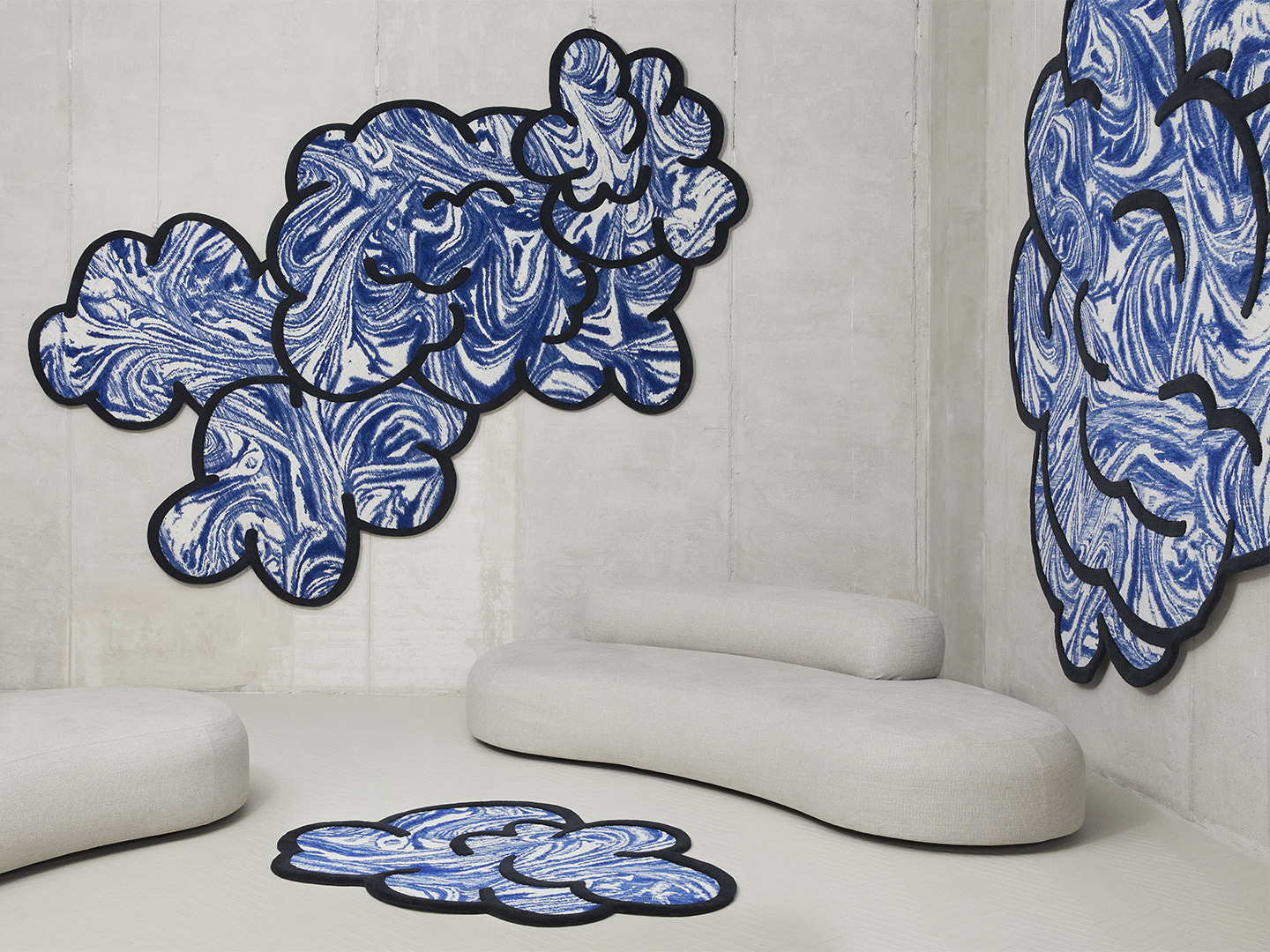

Venus Power collection of rugs by Patricia Urquiola for cc-tapis
This collection by Patricia, the latest in a long line of collaborations with cc-tapis, features a group of four hypnotically textured cloud-like rugs. From largest to smallest, they are titled ‘Weallcomefromvenus’ (220 x 323cm), ‘Venus’ (200 x 342cm), ‘Cirrus’ (240 x 260cm) and ‘Nuvola’ (135 x 110cm).
Each rug is available in three different colours: blue, pink and green, where the marble effect of each colourway is described by the cc-tapis team as “a vortex of colour inspired by the intriguing atmosphere of Venus”.
Heavy black marking outlines the perimeter of the rugs’ floaty shapes and, on the largest rug, defines the single letters that compose the phrase “We all come from Venus” – a mission statement that adopts a lettering technique often seen in graffiti art. Further words are provided by editor and author Anja Aronowsky Cronberg, who has prepared an essay to accompany the collection.
Completely hand-knotted by Tibetan artisans, the decisive black lines of the designs are hand-carved to gently rise in a soft and curved three-dimensional form, which is repeated in the silhouette of the rugs; “a tribute to feminine archetypes,” says the cc-tapis team.
Venus Power by Patricia Urquiola joins works by Muller Van Severen and Edoardo Piermattei at the cc-tapis showroom in Milan, and at supersalone, until September 10.
cc-tapis.com; patriciaurquiola.com
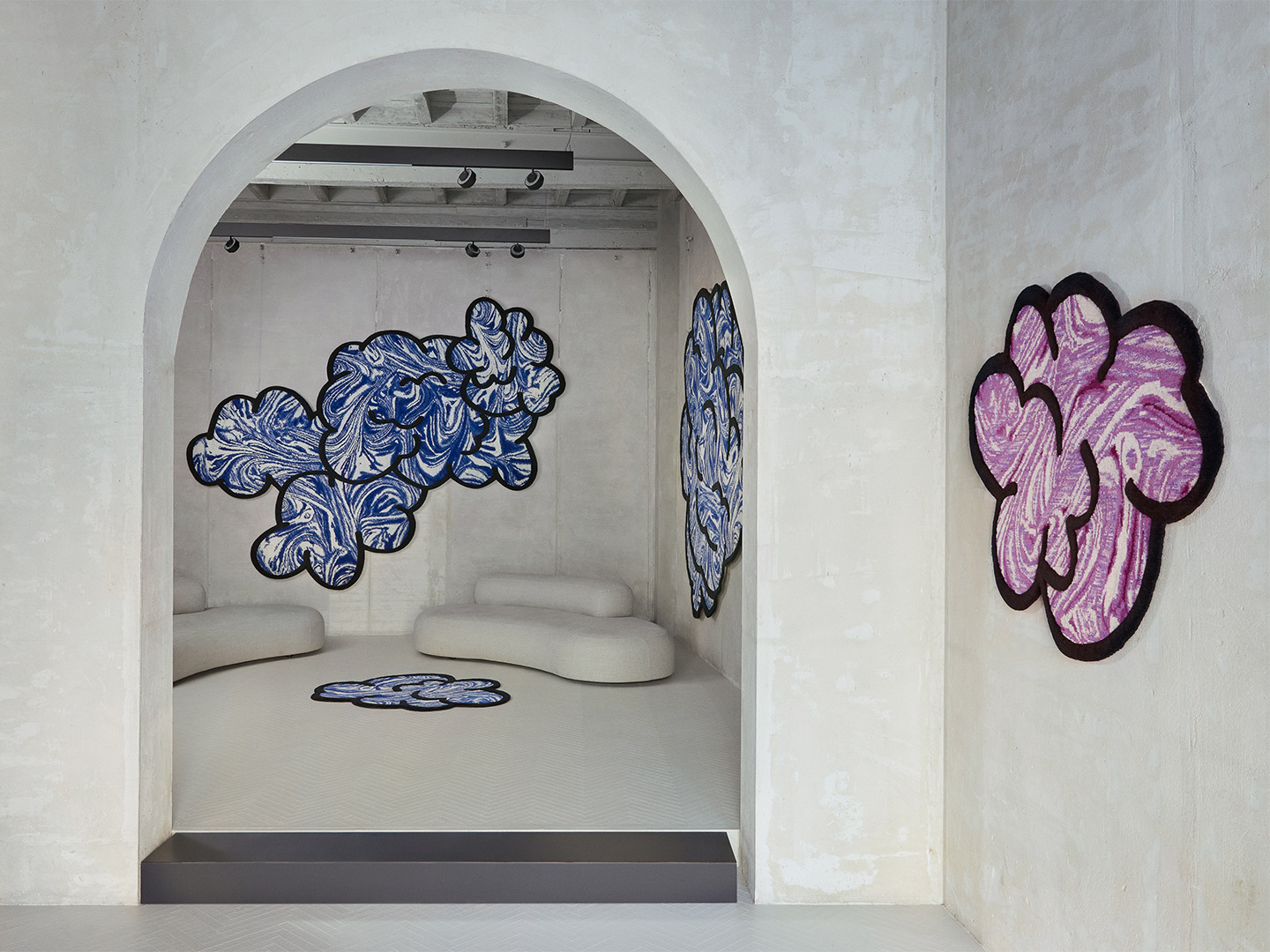
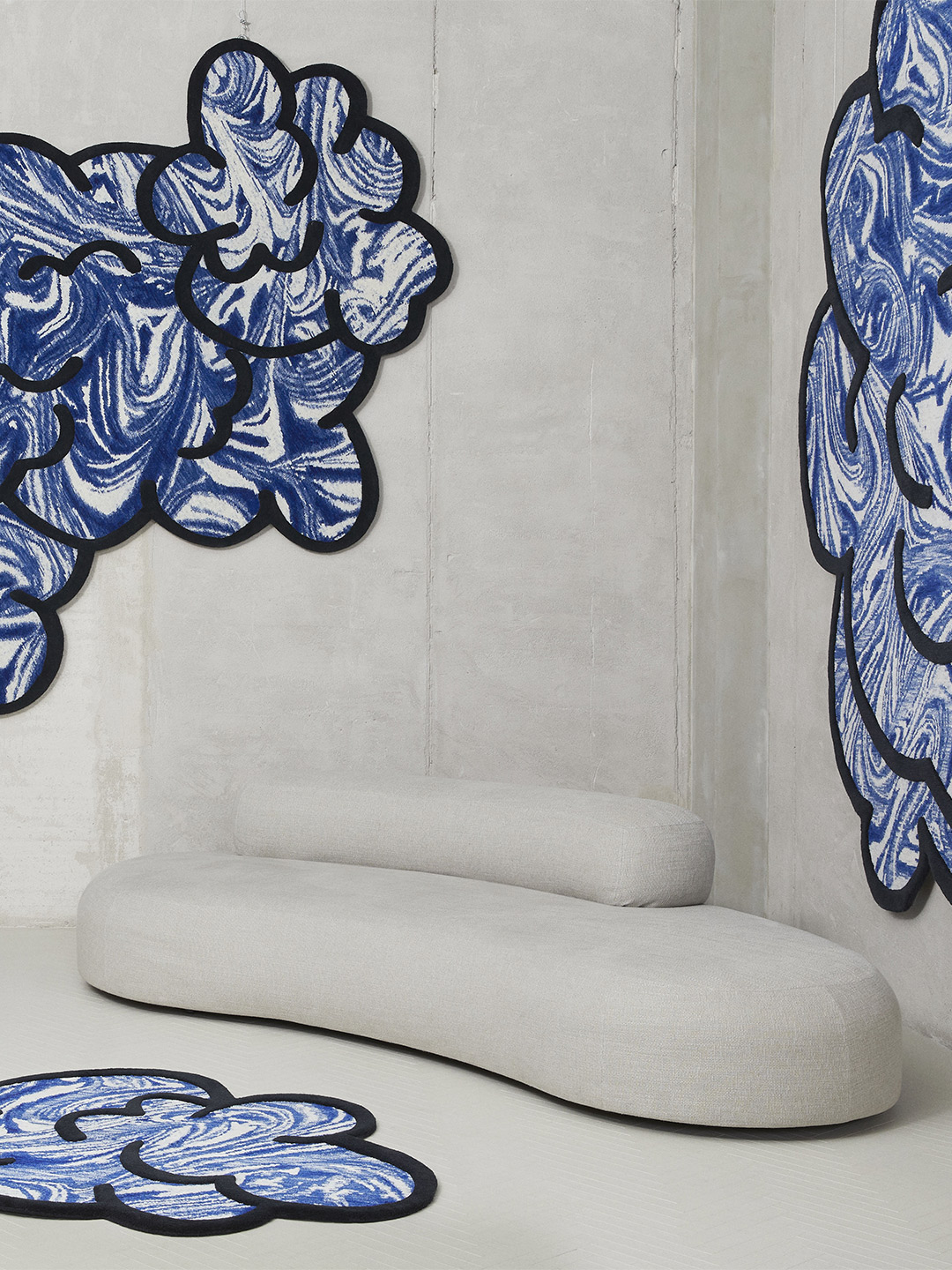
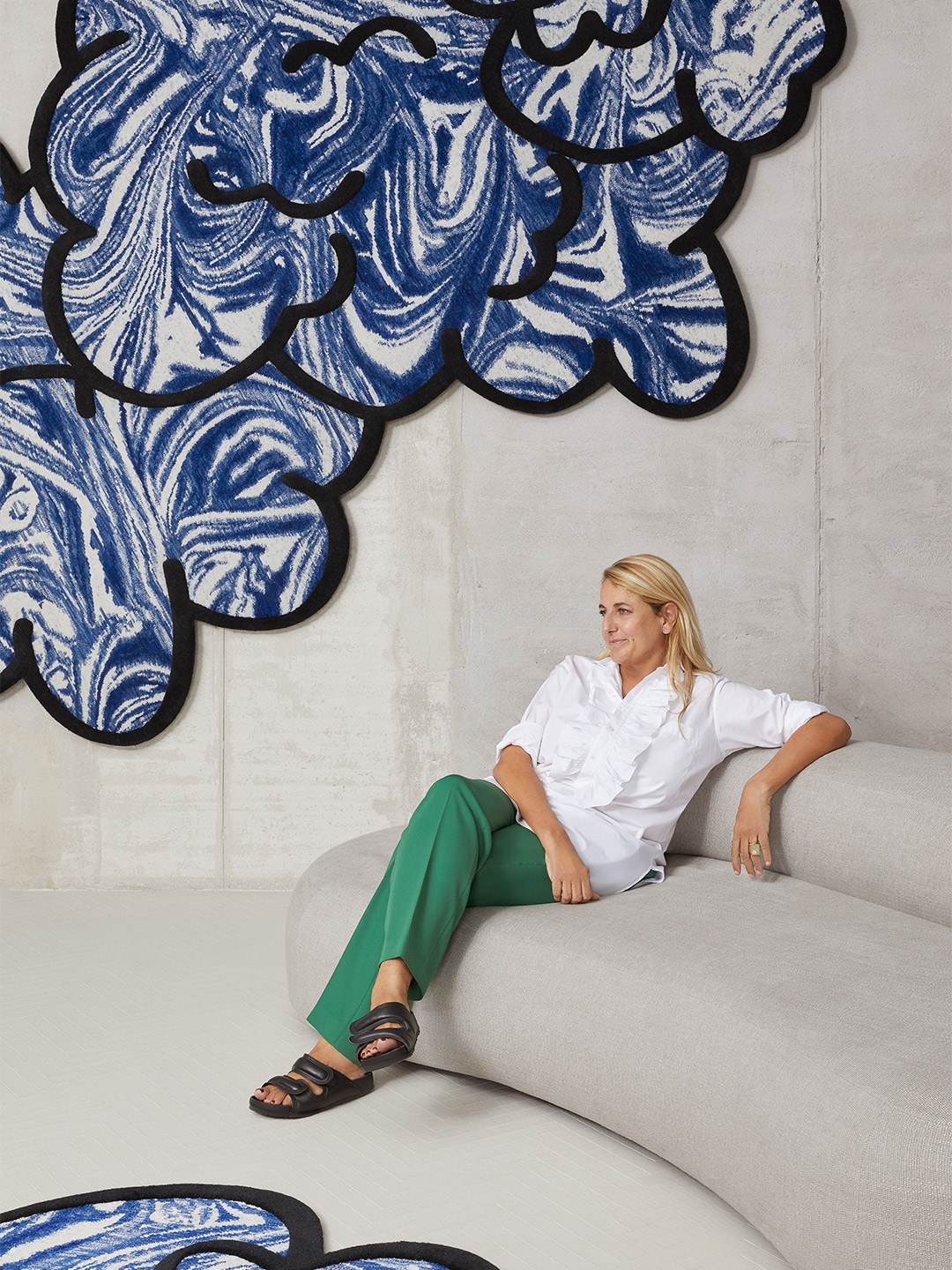
If everyone – men and women – considered and embraced every aspect of themselves, we could add more dimension and colour to the way we approach everyday life.
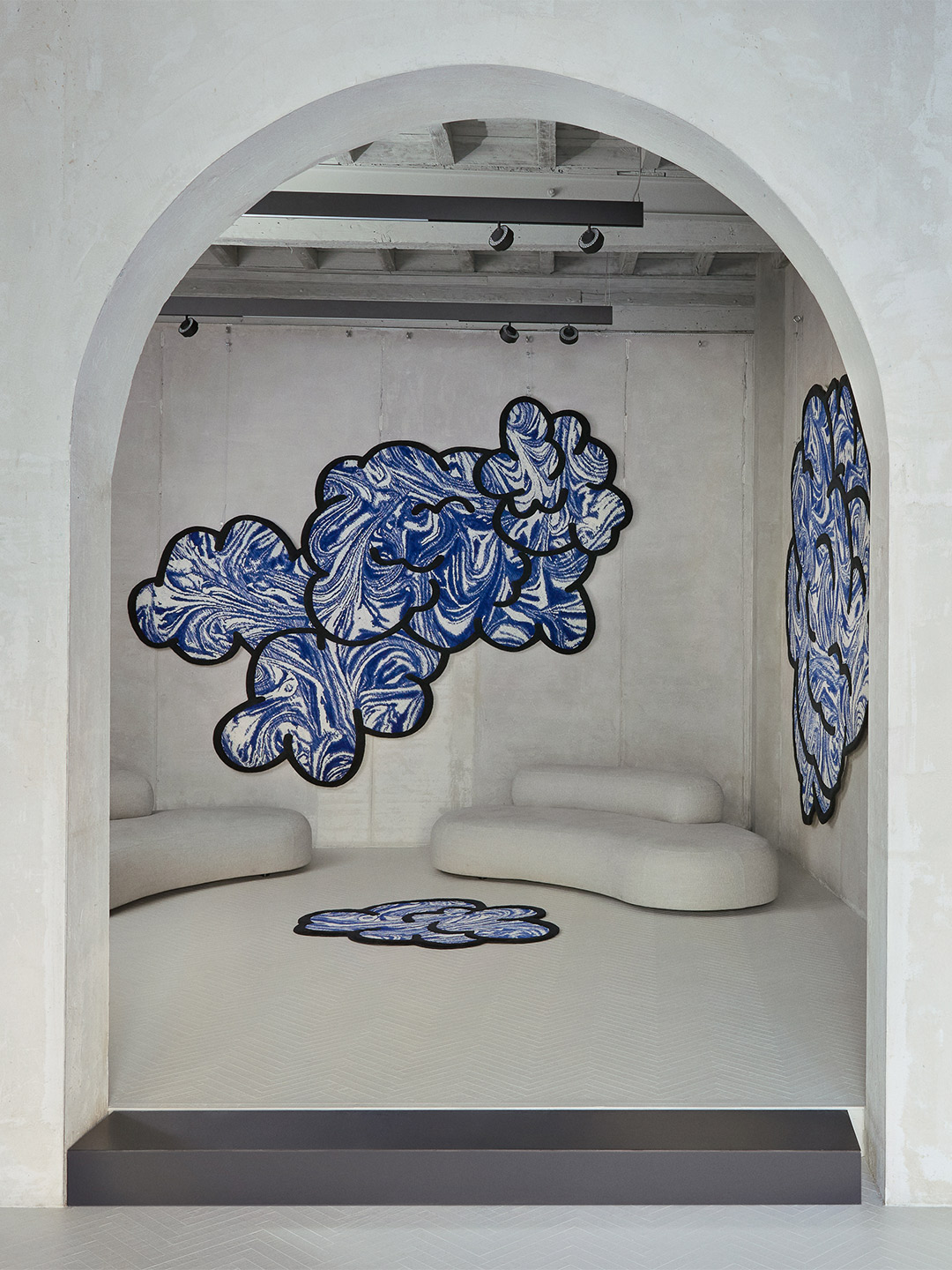
Catch up on more architecture, art and design highlights. Plus, subscribe to receive the Daily Architecture News e-letter direct to your inbox.
Related stories
- Concrete bird-watching pavilions in Stockholm by Andrén Fogelström.
- Aranya Art Centre in the northeast of China by Neri&Hu.
- Hainan Science and Technology Museum by MAD Architects.
Aligned with the commencement of this year’s Milan Design Week, legendary Italian ceramics-maker Bitossi has unveiled The Bitossi Archive Museum near Florence. Presenting to the public about 7000 pieces of ceramics, produced over the 100 years since the company’s founding in 1921, the facility is a result of the “museumisation” of the industrial archive of Bitossi. It celebrates a legacy of craftsmanship, research and innovation, and the brand’s many collaborations with great names in design, from Ettore Sottsass and Nathalie Du Pasquier to Bethan Laura Wood and, most recently, French artist Pierre Marie.
Designed by architect Luca Cipelletti, founder of Milan-based firm AR.CH.IT, the Bitossi Archive Museum covers an area of over 1500 square metres at the brand’s historical headquarters in Montelupo Fiorentino. Occupying space once utilised for production, the museum preserves the original structure of the premises. The architect leant into existing industrial features to organise the exhibition according to a stratification principle, “where the narration is contextualised in an environment capable of generating multiple levels of interpretation,” he explains.
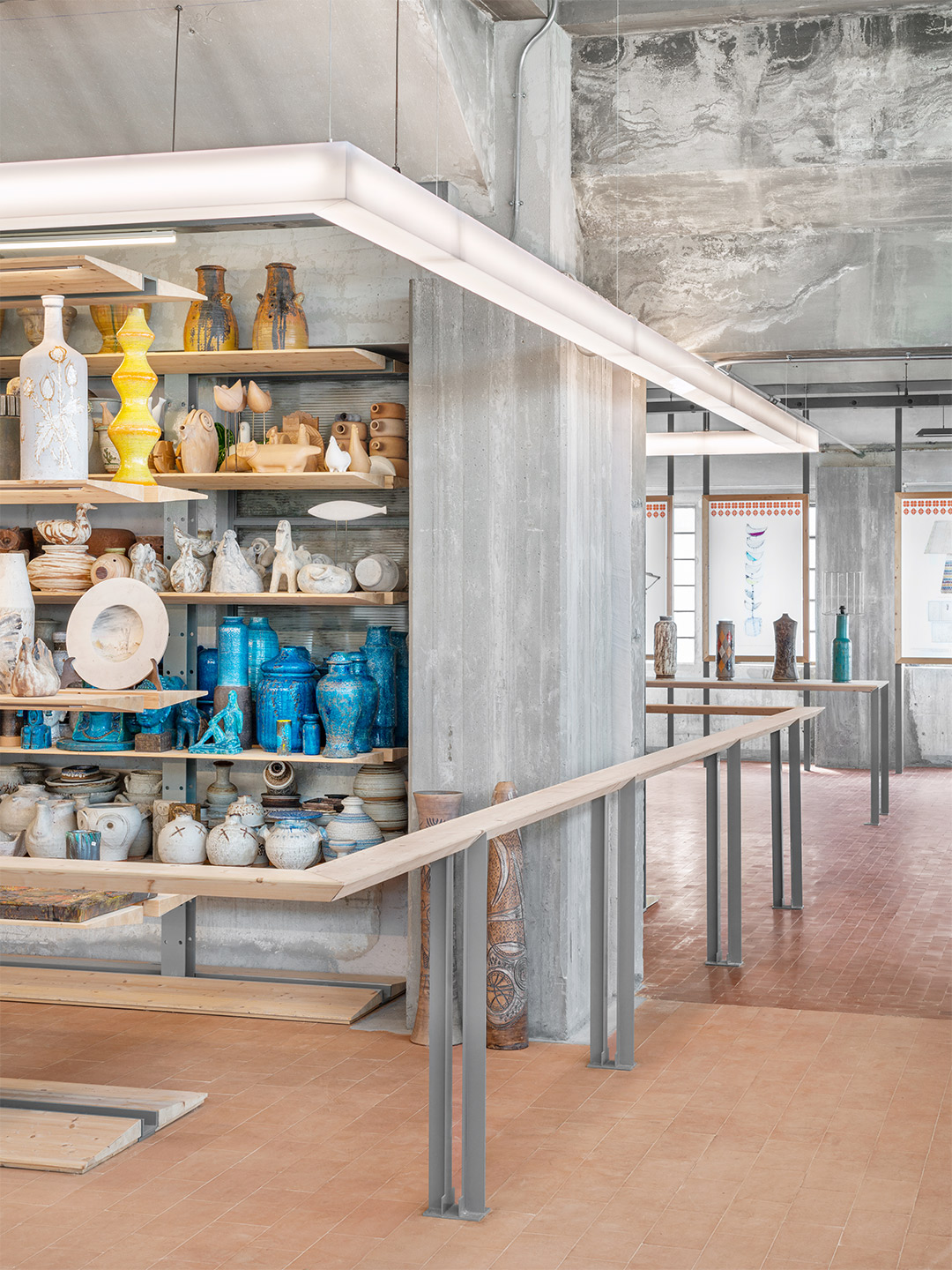
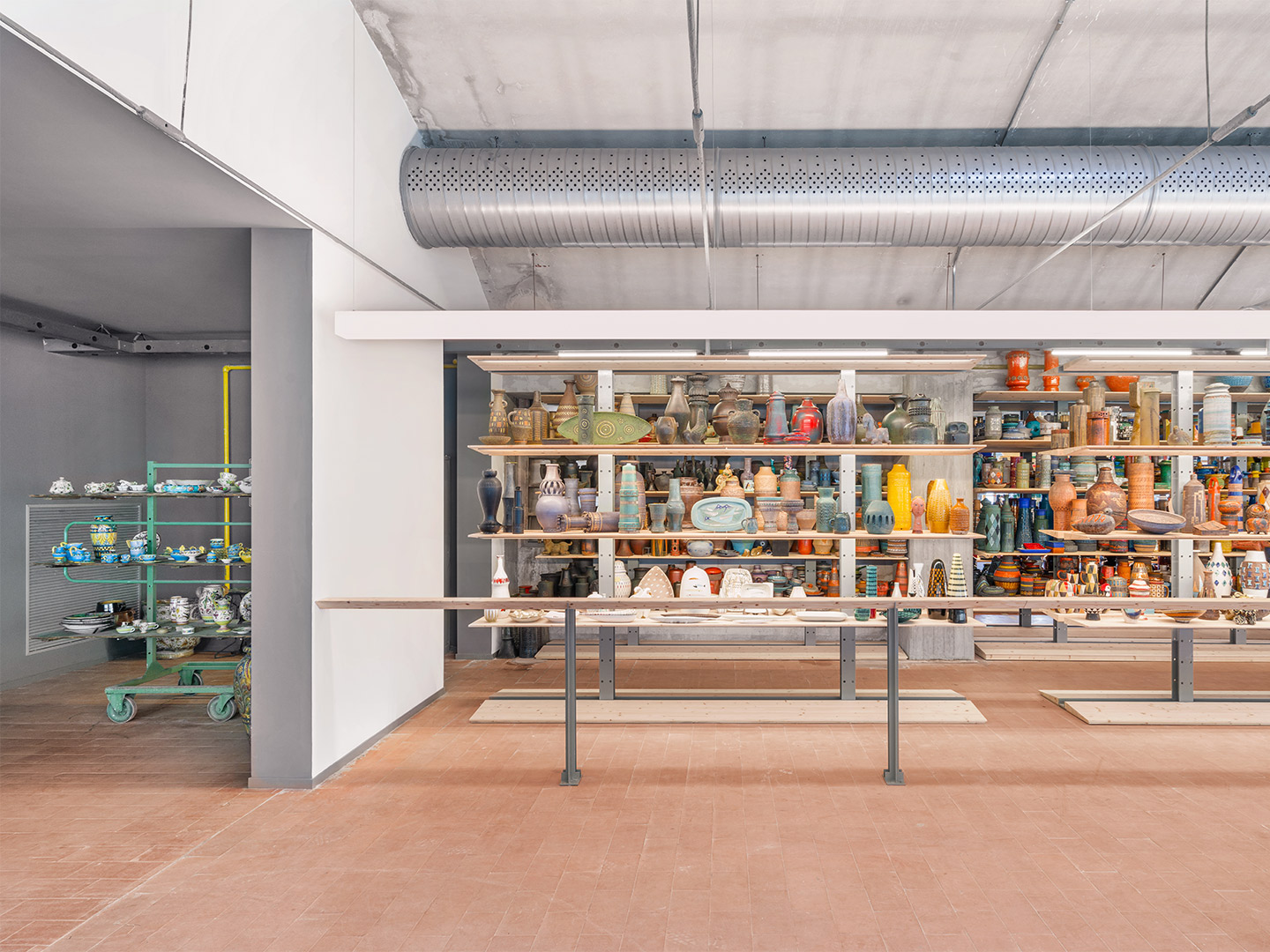
Bitossi Archive Museum in Florence by AR.CH.IT
“The design method chosen does not want to tell a story by isolating it in areas without identity,” Luca says of his architectural response. “It tends to contextualise it in spaces that generate multiple levels of interpretation and that arouse the visitor’s curiosity and stimuli.”
The protagonist of the exhibition is Bitossi’s complete – and sublimely colourful – historical archive. But visitors to the museum will also discover a selection of plaster models and forms, work tools, a body of photographs and paper documents that are intended as an inspirational resource to be used by professionals and the public.
Bitossi’s fourth generation owner, Ginevra Bocini, says the greatest challenge for a “business museum” of this kind is focusing on beauty, and promoting Italian style through new perspectives and directions, “where it is possible to encounter expressions of culture and creativity,” she says.
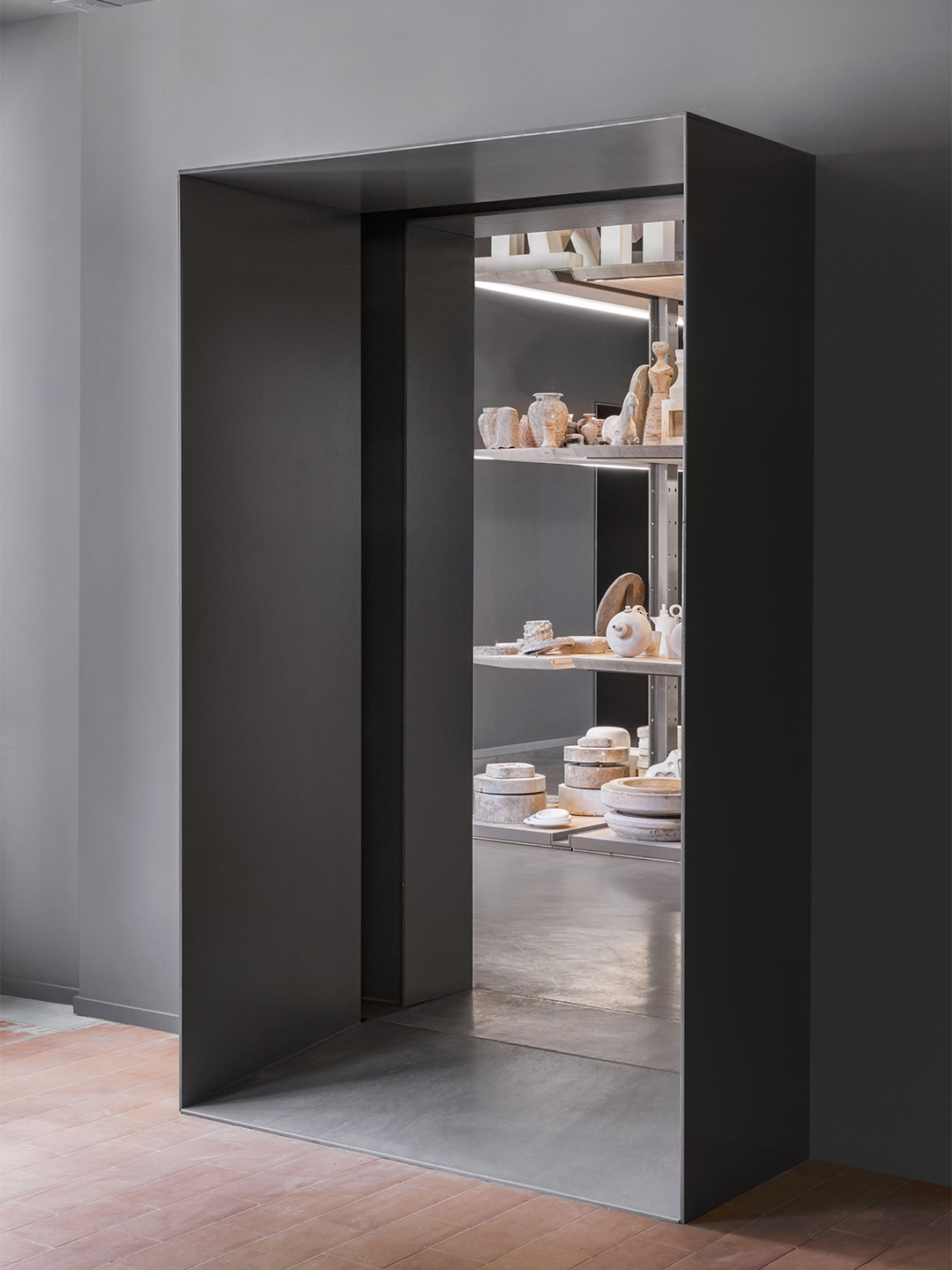

“The [Bitossi Archive Museum] represents first and foremost the corporate identity,” Ginevra adds. “It is the custodian and disseminator of memory, the repository of industrial culture, it is entrusted with the task of telling the story and the transformation from the past to the present day.”
The exhibition experience curated by Porzia Bergamasco, with the assistance of Bitossi’s industrial archivist Marina Vignozzi Paszkowski, lines up a varied and colourful display of the brand’s production repertoire on custom-made pine shelving. Sorted by chronology and type, the pieces are broken down into different levels of uses.
“The public will be projected into an immersive, totally physical and perceptive experience that takes place by itself in a rigid but permeable space, in which everything seems animated and floating,” Porzia says. “It changes when the observation point changes, as in the lure of a silhouette, the vibration of a colour,” she suggests.
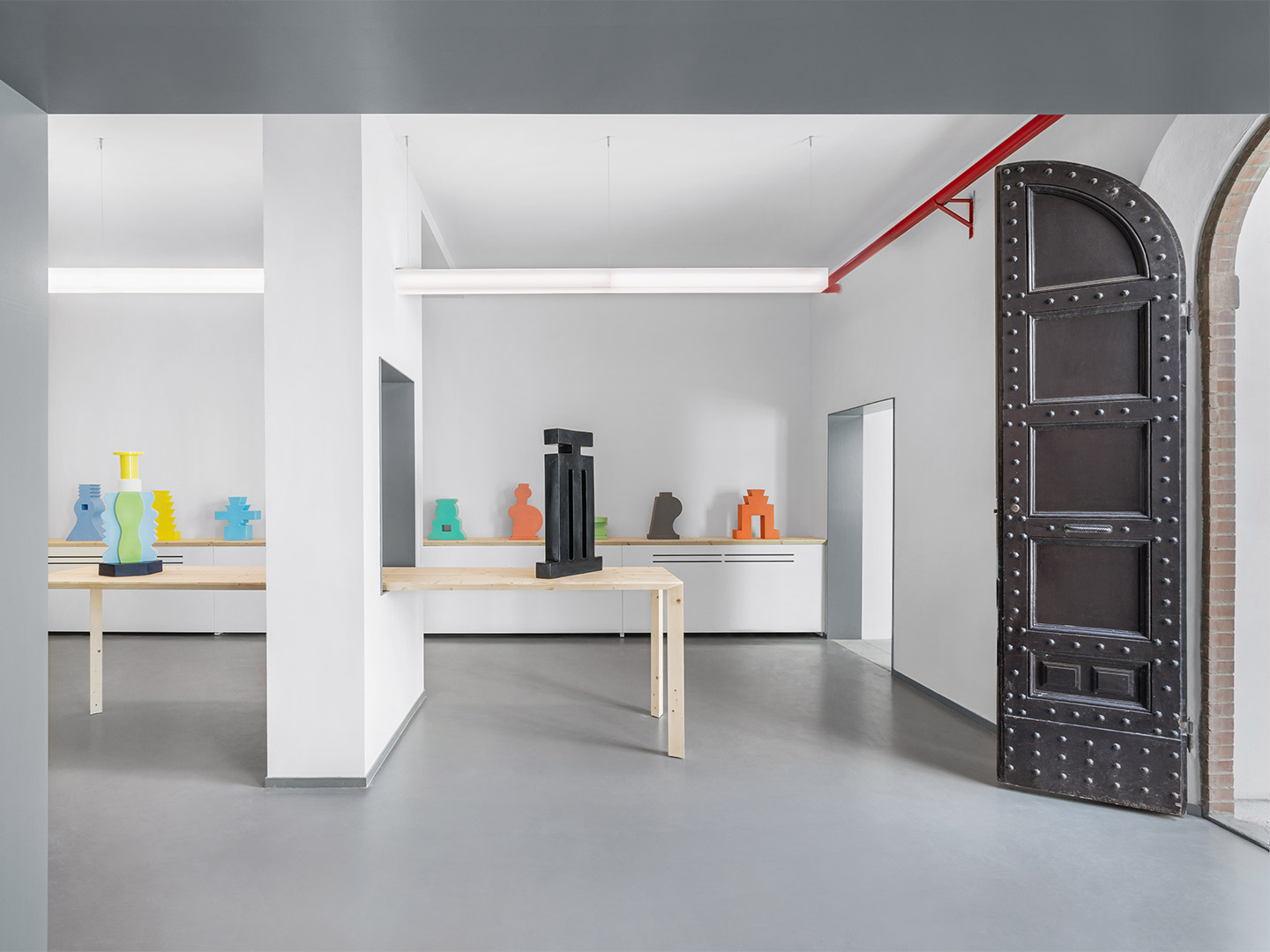
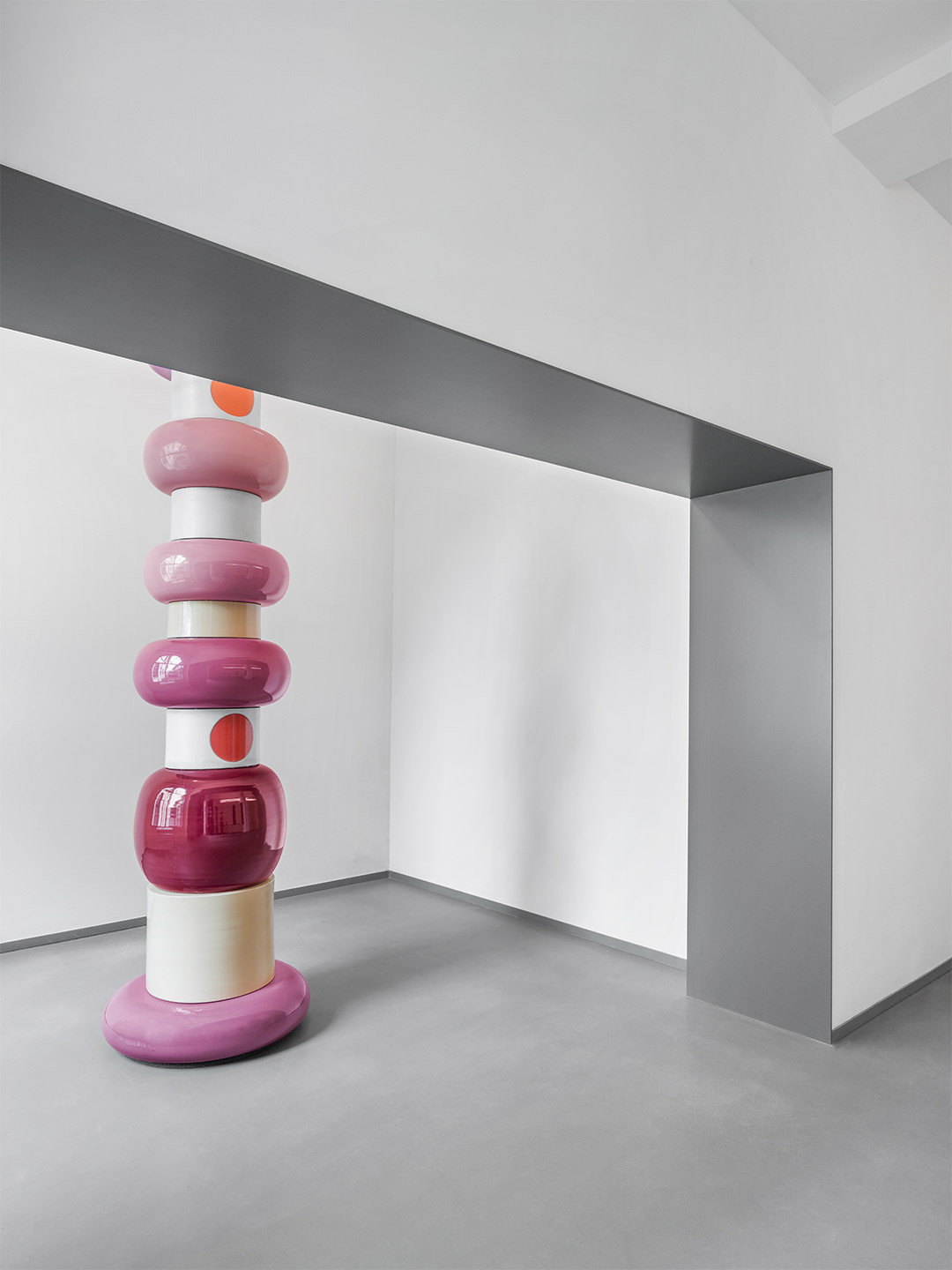
From the more compact and crowded wings, the display thins out towards the viewer. It becomes more reflective in the central zones, conceived as exceptional installation moments committed to groups of ceramics of particular interest. Including the well-known Rimini collection by Aldo Londi (the historic creative director of Bitossi), the Totems by Ettore Sottsass and the work Il Dormiente con il Coccodrillo (translating to Sleeping Ones and Crocodiles) by Mimmo Paladino.
The latest Bitossi collection is presented in a dedicated project room, which is currently hosting a presentation of ceramics by French artist Pierre Marie. But the very last shelf of the exhibition space has been left empty, creating “a place to be filled with the results of new collaborations,” the Bitossi team say.
Here lies the opportunity for evolution and the very weaving of Bitossi’s future identity. “The work of many years has found its location and place of conservation at the museum,” says Marina. “It’s a story capable of renewing itself and enriching the business culture, the history of a factory, a family, the history of artisans and artists – an Italian story.”
The Bitossi Archive Museum will be open to the public by appointment from 6 September, 2021. Bitossi is also in Milan alongside Salone del Mobile (until 10 September) with a selection of Bitossi ceramics showcased in the PAST exhibition at Dimoregallery.
The work of many years has found its location and place of conservation. A story capable of renewing itself… an Italian story.
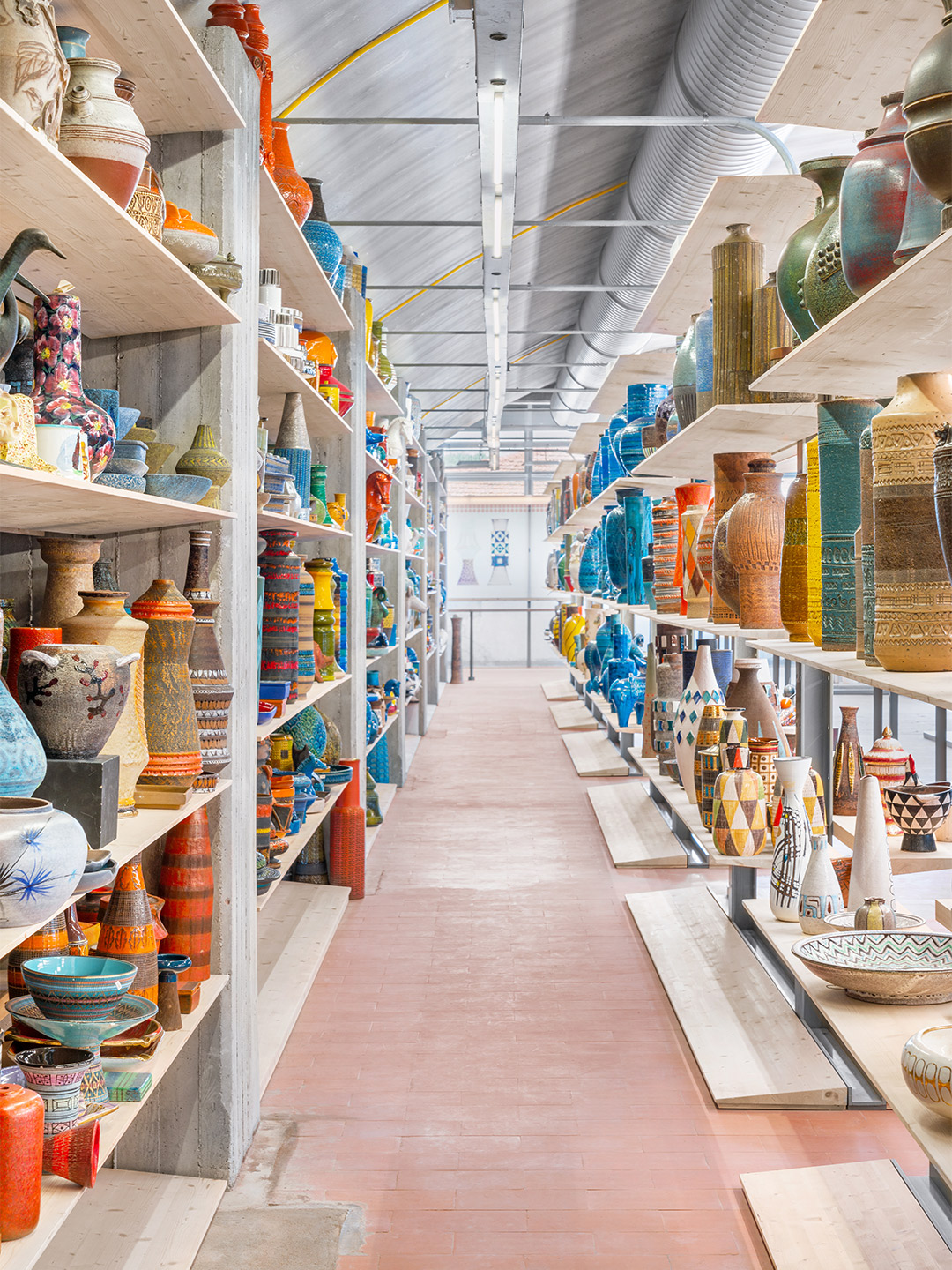
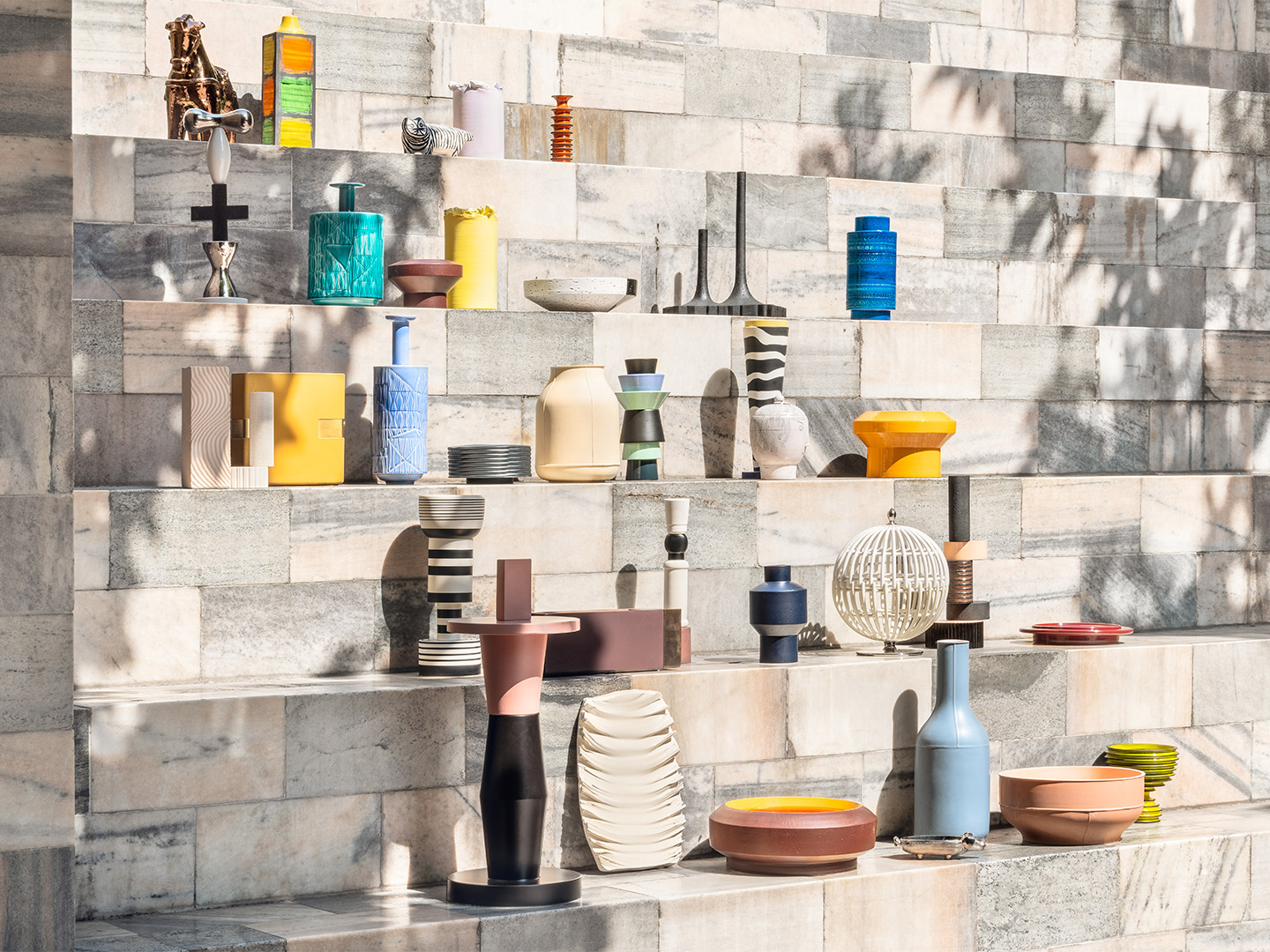
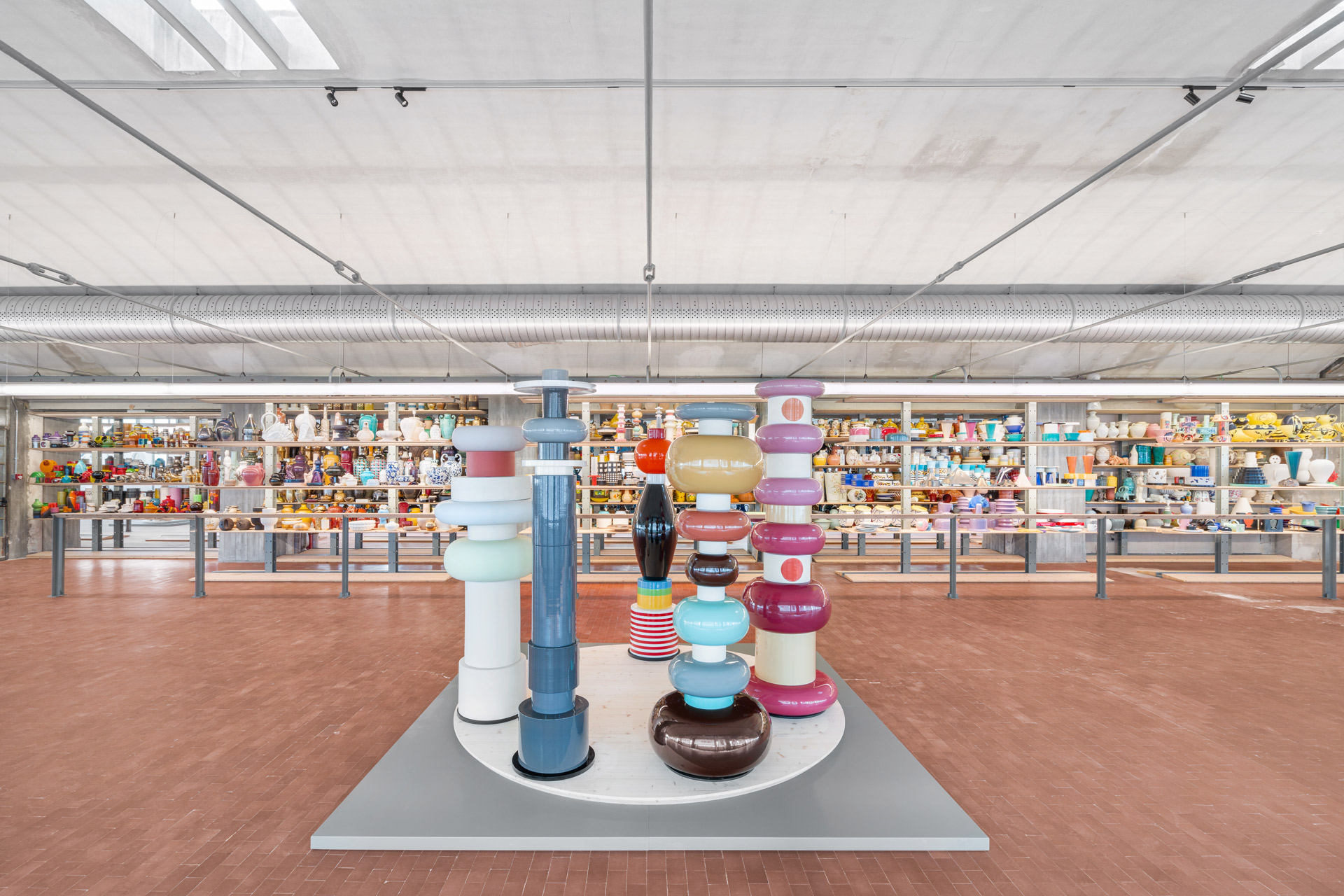
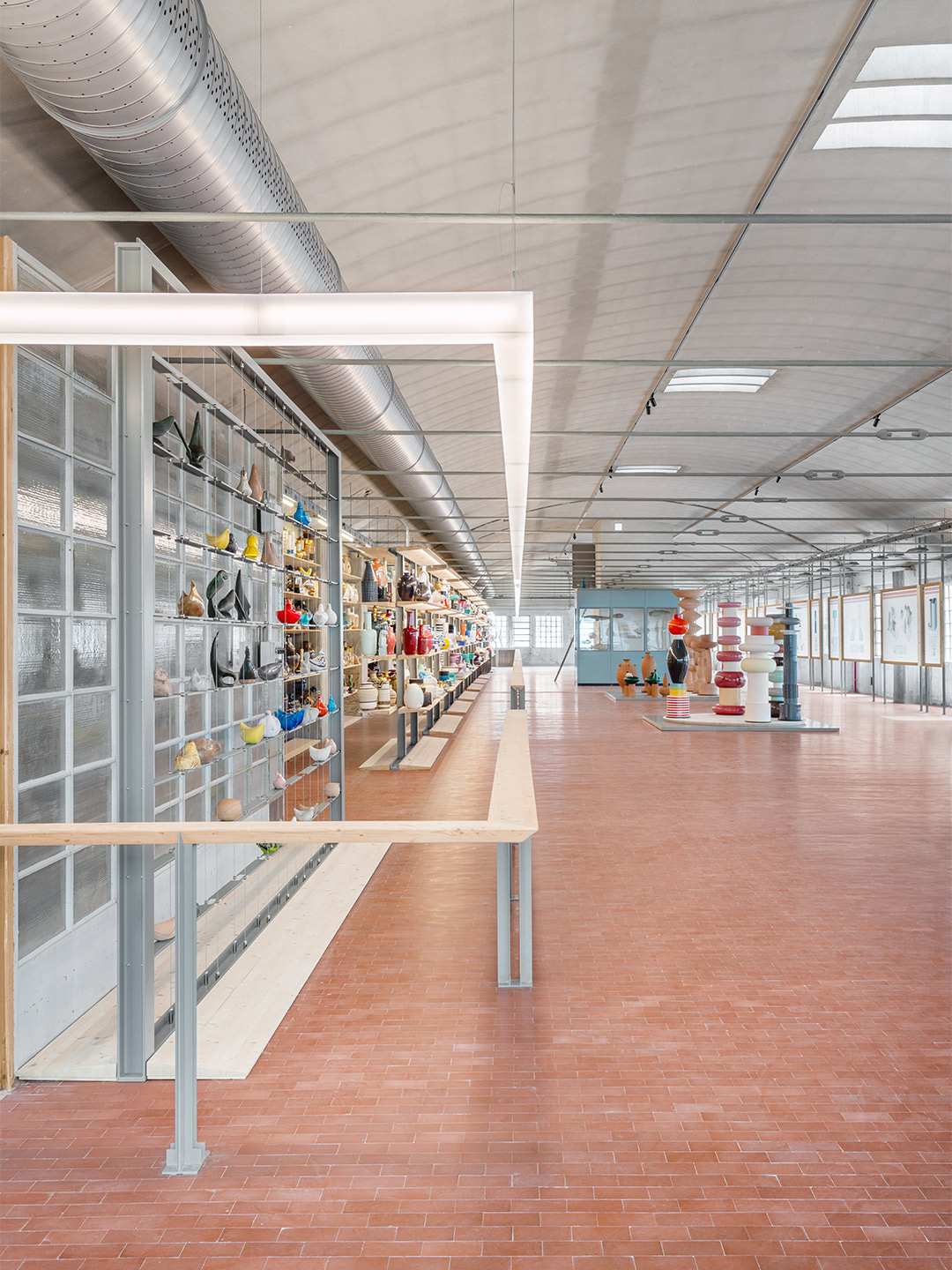
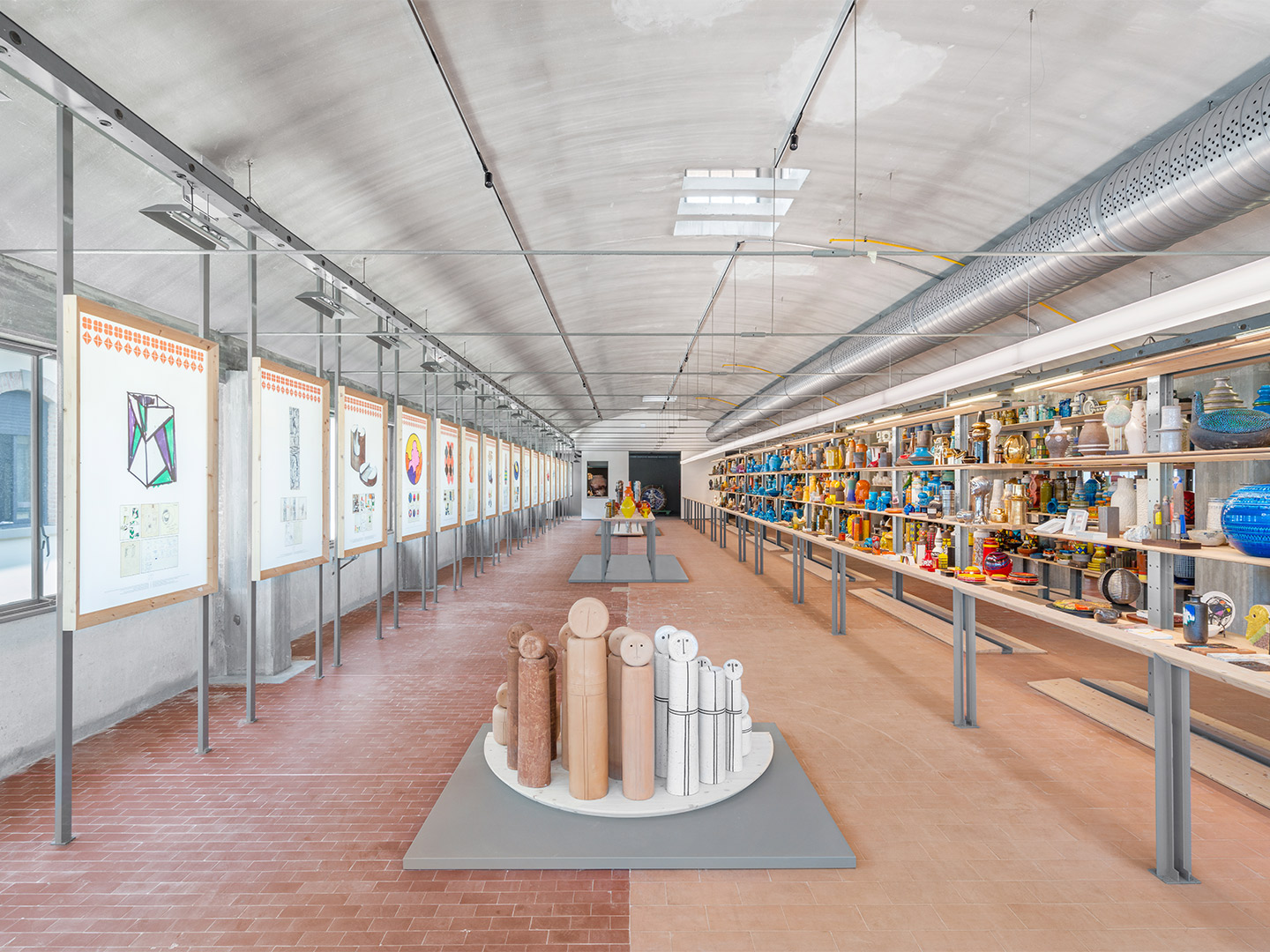
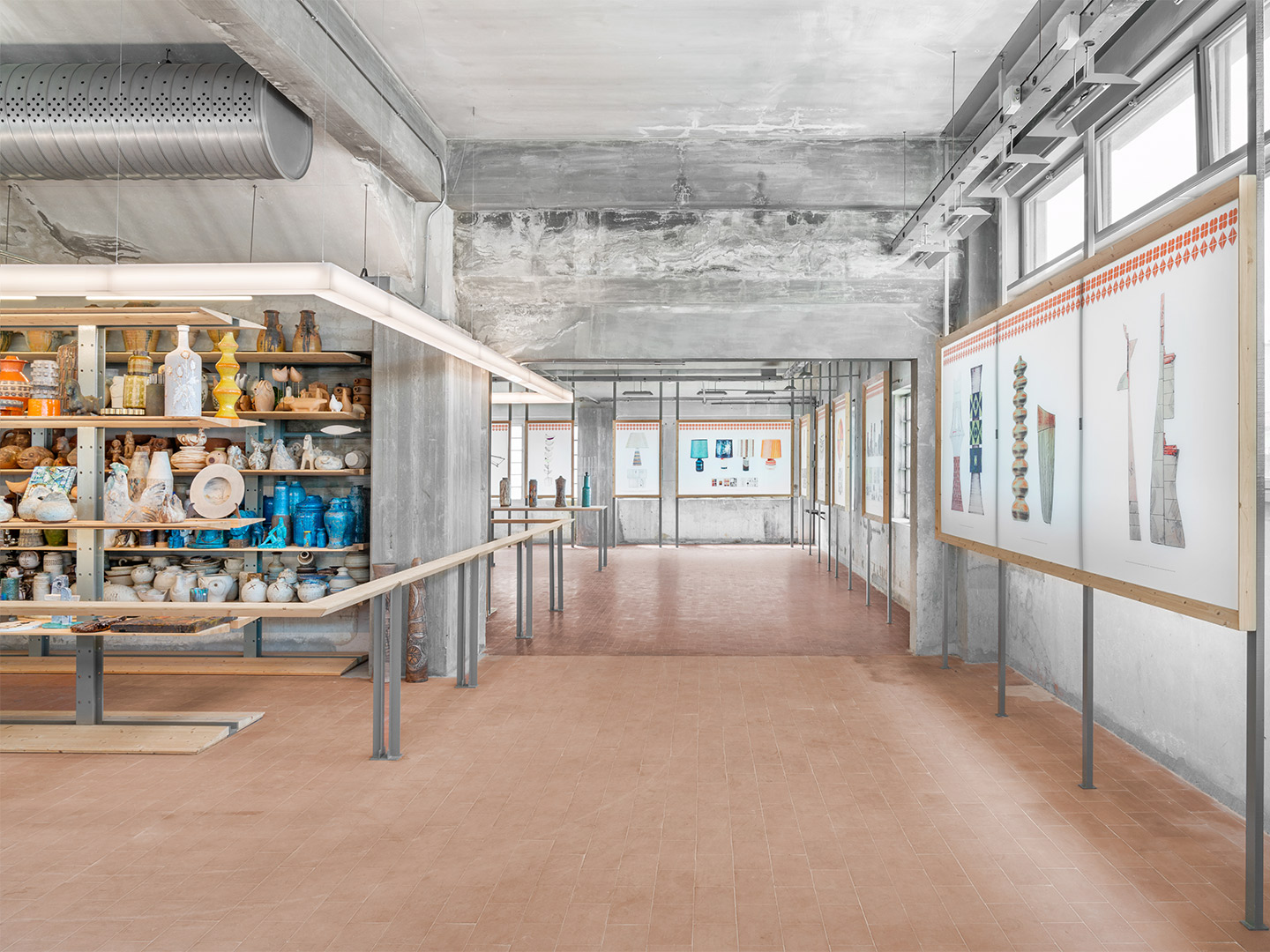
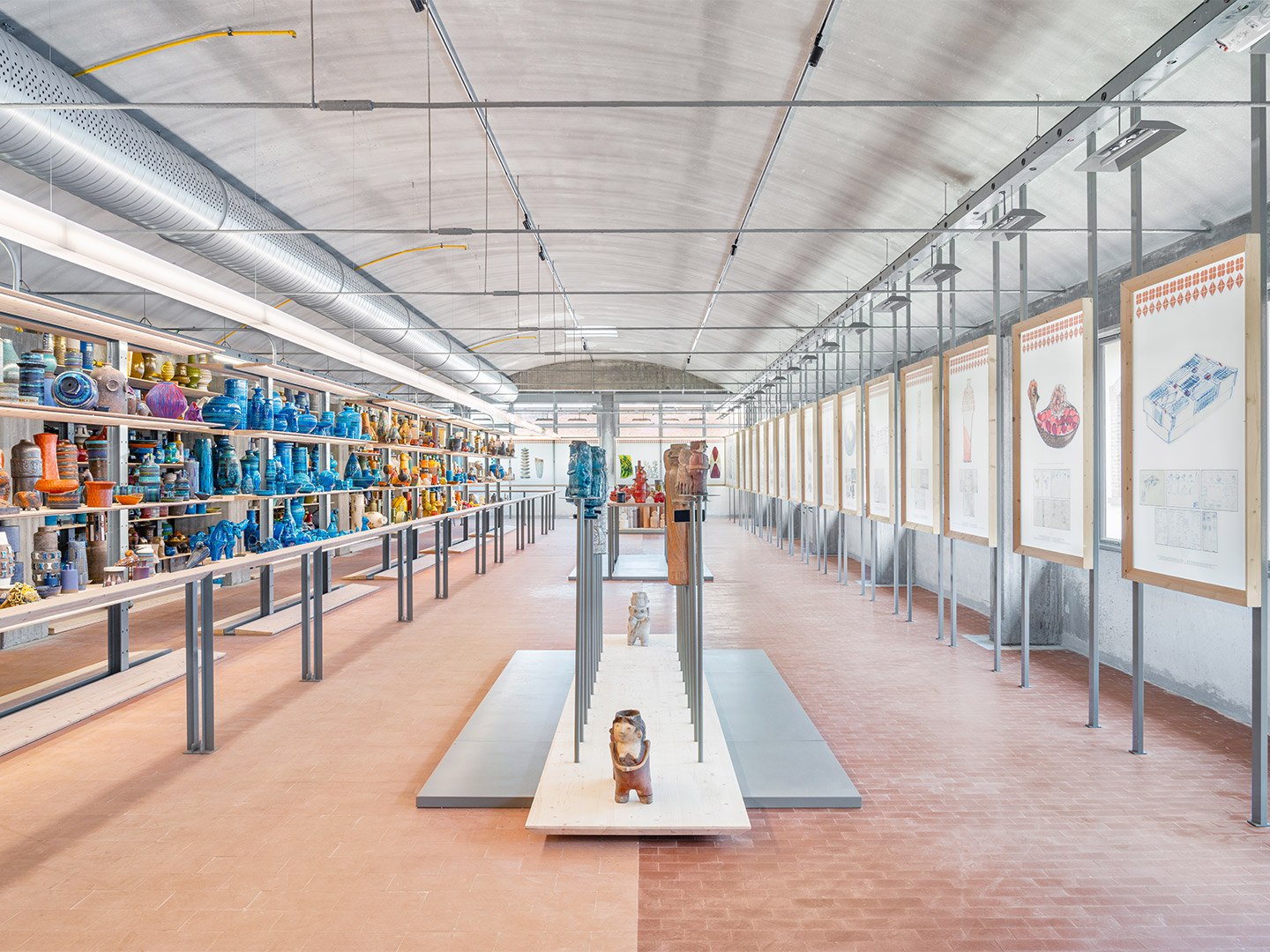
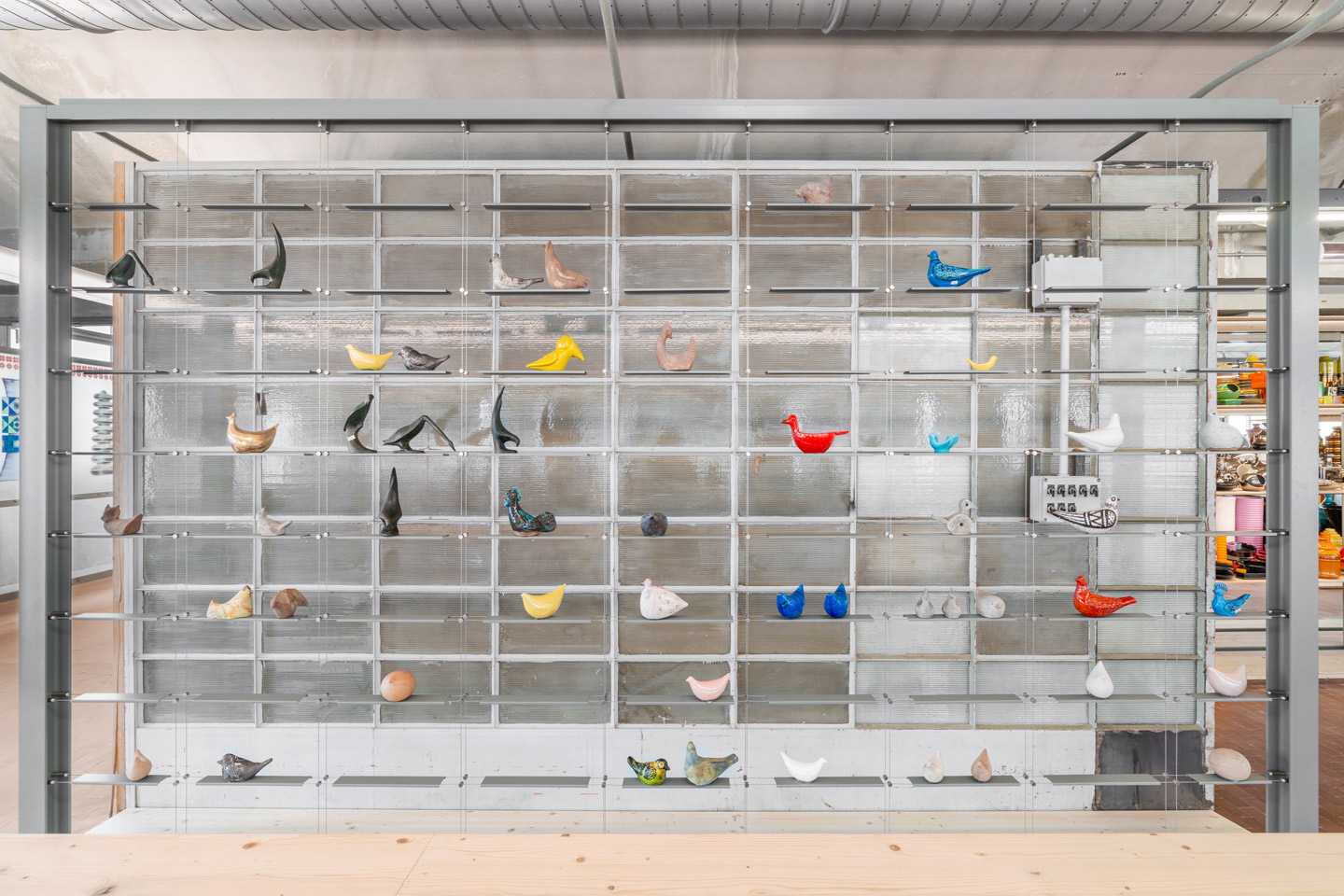


Catch up on more architecture, art and design highlights. Plus, subscribe to receive the Daily Architecture News e-letter direct to your inbox.
Related stories
- Concrete bird-watching pavilions in Stockholm by Andrén Fogelström.
- Aranya Art Centre in the northeast of China by Neri&Hu.
- Hainan Science and Technology Museum by MAD Architects.
Aligned with the commencement of this year’s Milan Design Week, legendary Italian ceramics-maker Bitossi has unveiled The Bitossi Archive Museum near Florence. Presenting to the public about 7000 pieces of ceramics, produced over the 100 years since the company’s founding in 1921, the facility is a result of the “museumisation” of the industrial archive of Bitossi. It celebrates a legacy of craftsmanship, research and innovation, and the brand’s many collaborations with great names in design, from Ettore Sottsass and Nathalie Du Pasquier to Bethan Laura Wood and, most recently, French artist Pierre Marie.
Founded in 1980 by legendary design pioneer Ettore Sottsass, the future-focused Memphians were responsible for bringing unmissable colour, decoration and energy to the ’80s. They defined a post-modern look, creating everything from furniture and lighting to carpets and fabrics over a prolific seven-year period.
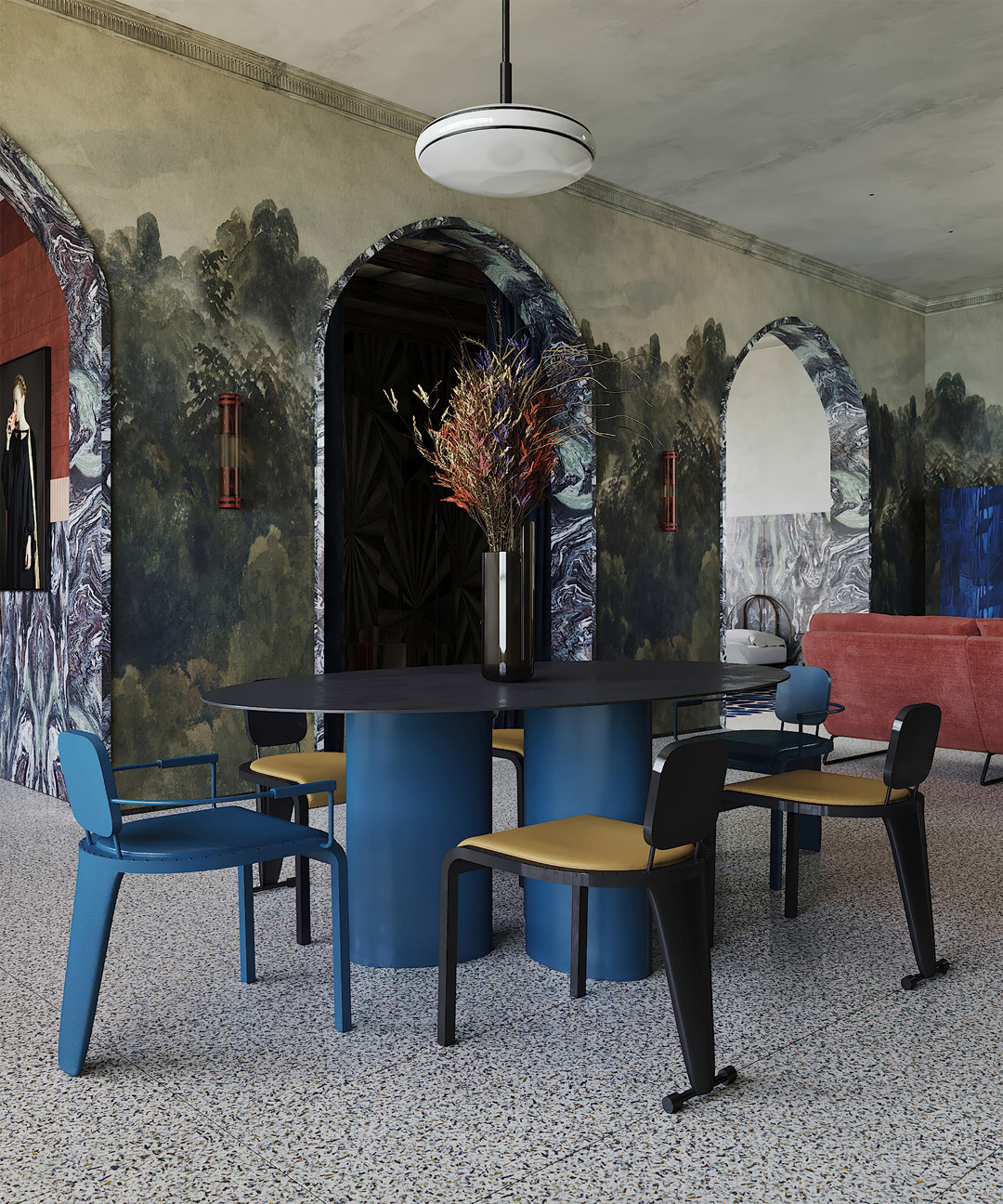
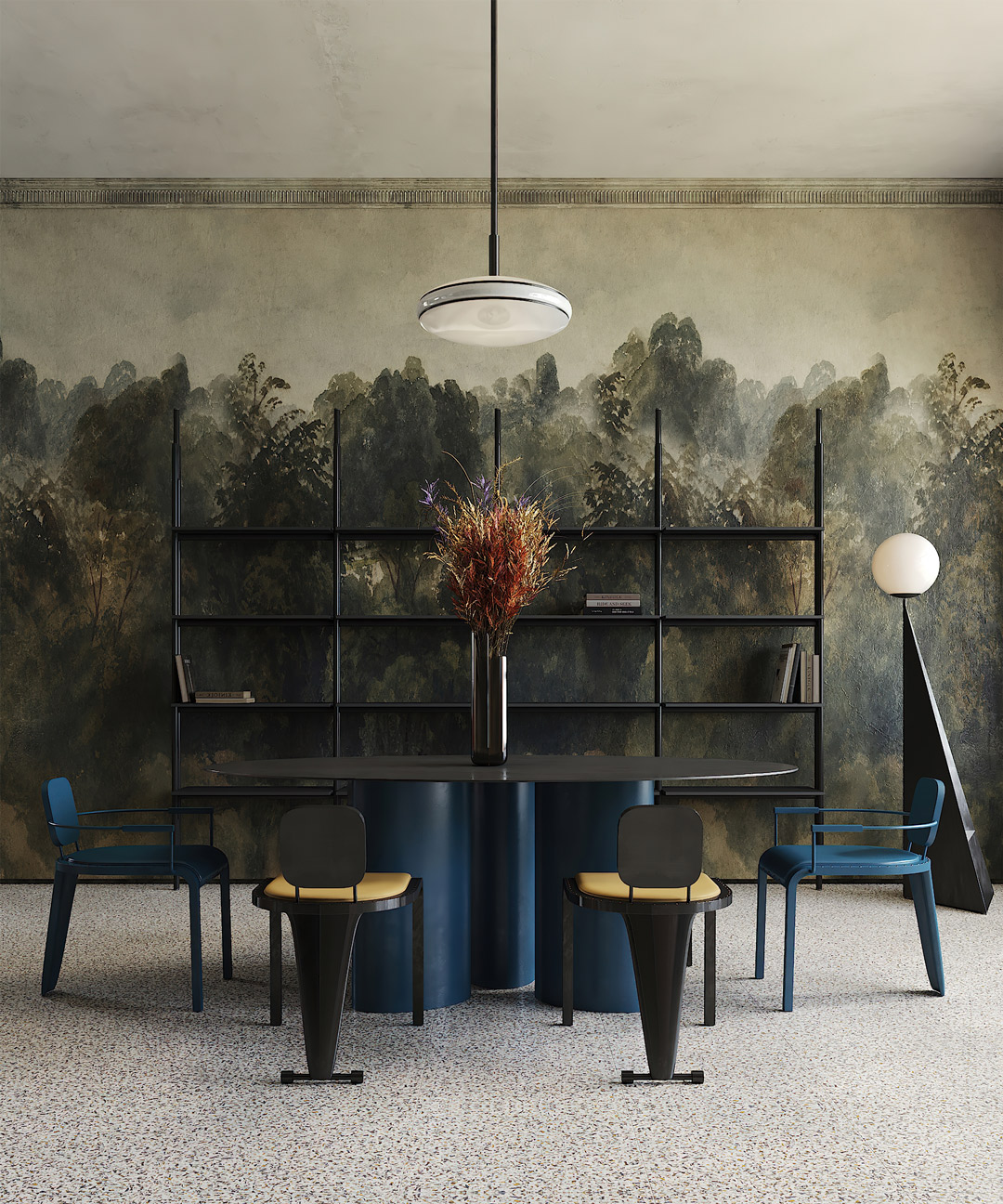
Memphis Milano apartment in Italy by Puntofilipino
Living up to its title and the legacy it carries, the renovated apartment by Puntofilipino masterfully merges traditional Milanese influences – think arched windows and doorways, intricate cornices and, of course, romantic street views – with the effervescent stylings of the Memphis movement.
An eclectic sequence of colour and pattern, stretching from the walls to a harmonious selection of furniture, is inspired – specifically – by the Art Deco designs and Pop Art of the era. “Not only for the striking primary colours, synthetic materials such as laminate and terrazzo and crazy geometry,” Gema says. “But also for its iconoclastic cheekiness!”
The hero of the fit-out is arguably the dining room, where a large table with chubby blue legs and a paper-thin top is enveloped by a canopy of trees, courtesy of floor-to-ceiling wallpaper. The painterly scene is only interrupted by block-colour furnishings and large internal archways whose jambs are patterned with the natural swirling of marble. While the mesmerising marble shoots off into other rooms, the classic bucolic imagery continues into the neighbouring living room.
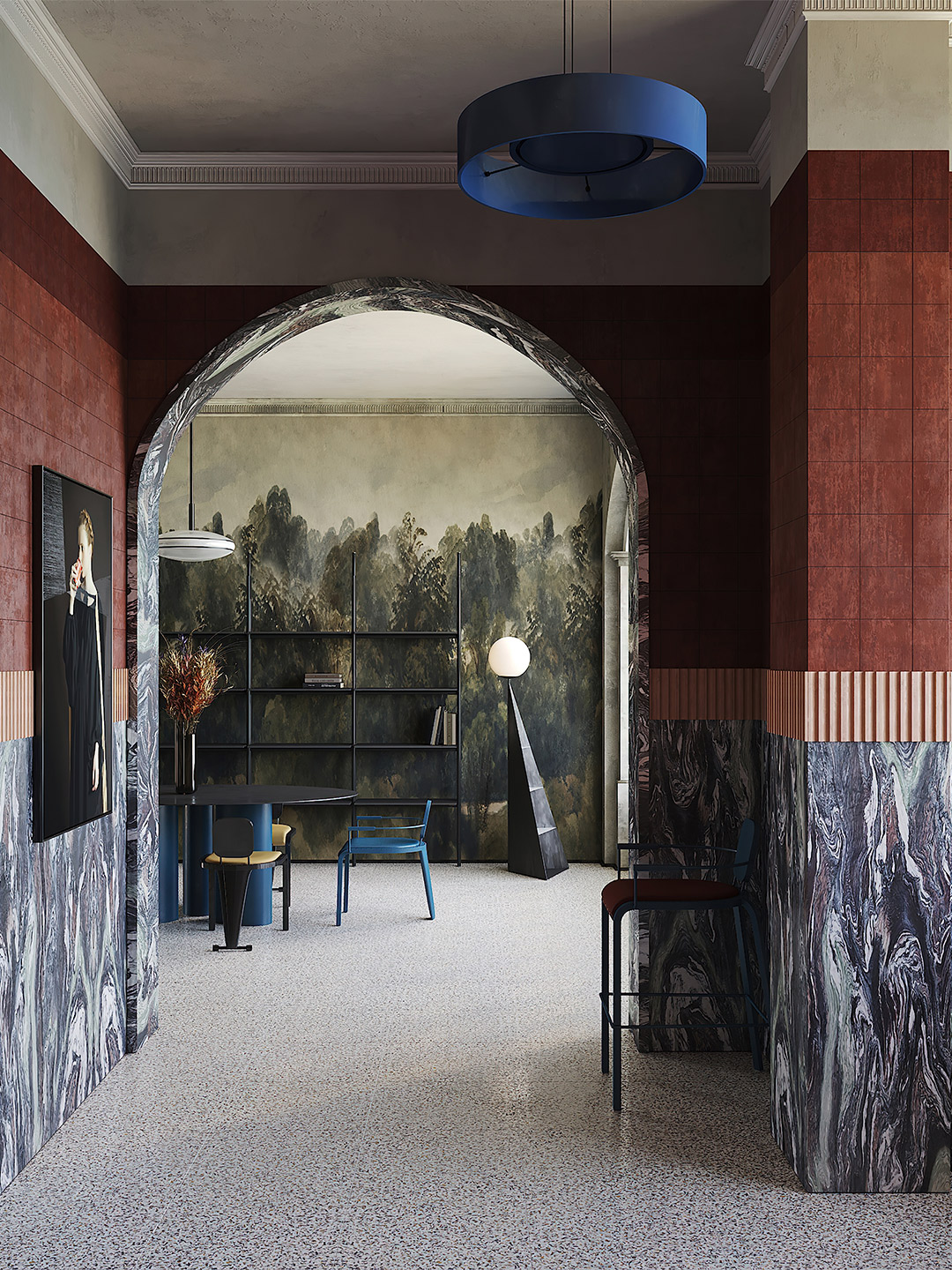
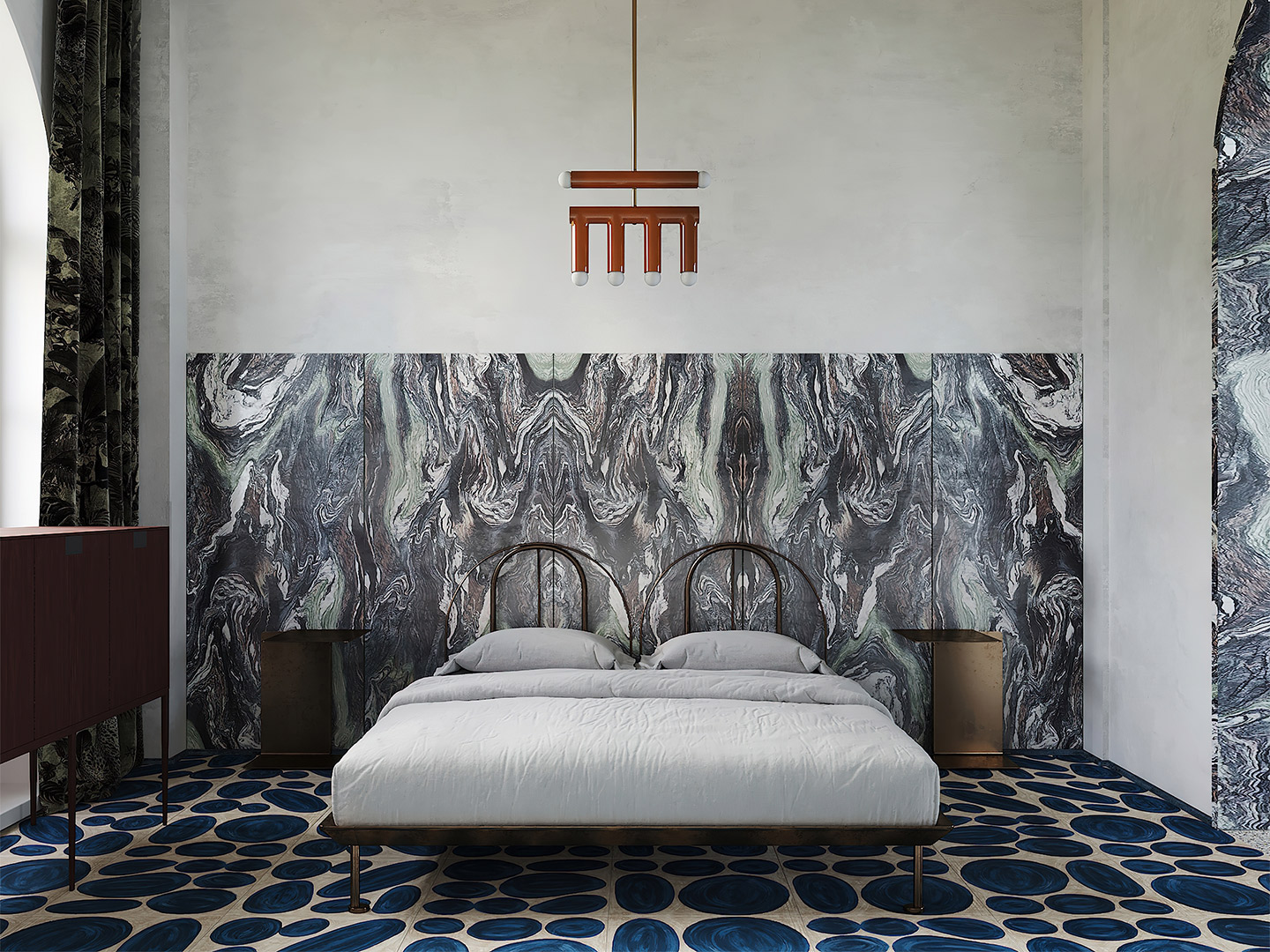
Following the marble pattern along the hallway and into the kitchen, a flair for drama unfolds – perhaps a throwback to Gema’s background in theatre set design and events. A fluted terracotta dado rail divides the wall treatments: marble along the bottom and two-tone burgundy brick tiles up top. Slatted joinery anchors the utilities, simply and strikingly.
Psychedelic moments continue to reveal themselves in the bedroom and bathroom, where high-octane ‘feature walls’ are far from taboo. Rather, they join the chorus of design flourishes that bring together the past and the future. “In order to bridge the aesthetic dichotomy between period interiors and contemporary expanse, the apartment stands out as a whimsical rebuke to the minimalist aesthetic and elegant austerity of mid-century modernism,” Gema concludes.
Living up to its title and the legacy it carries, the apartment masterfully merges traditional Milanese influences with the effervescent stylings of the Memphis Group.
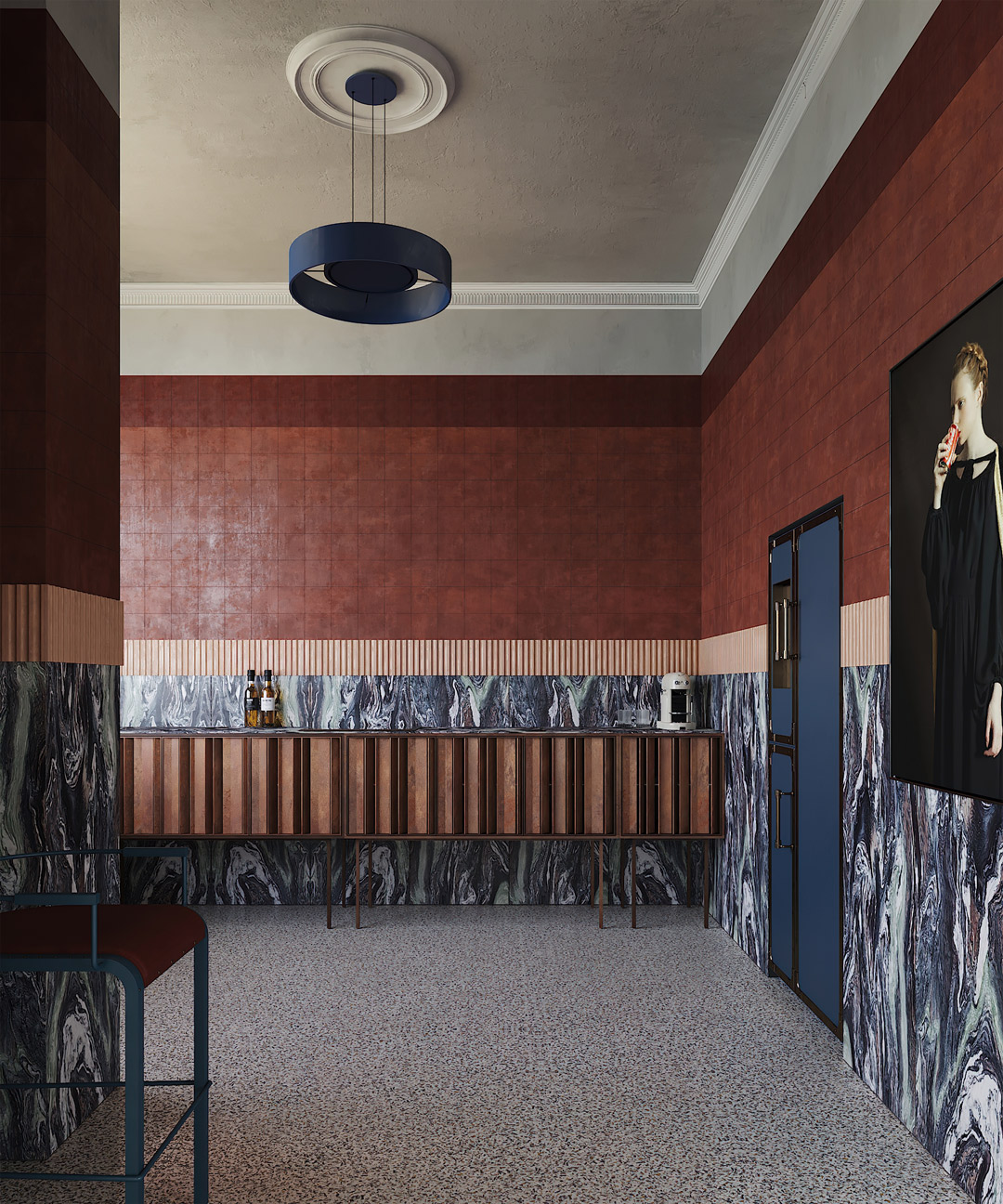
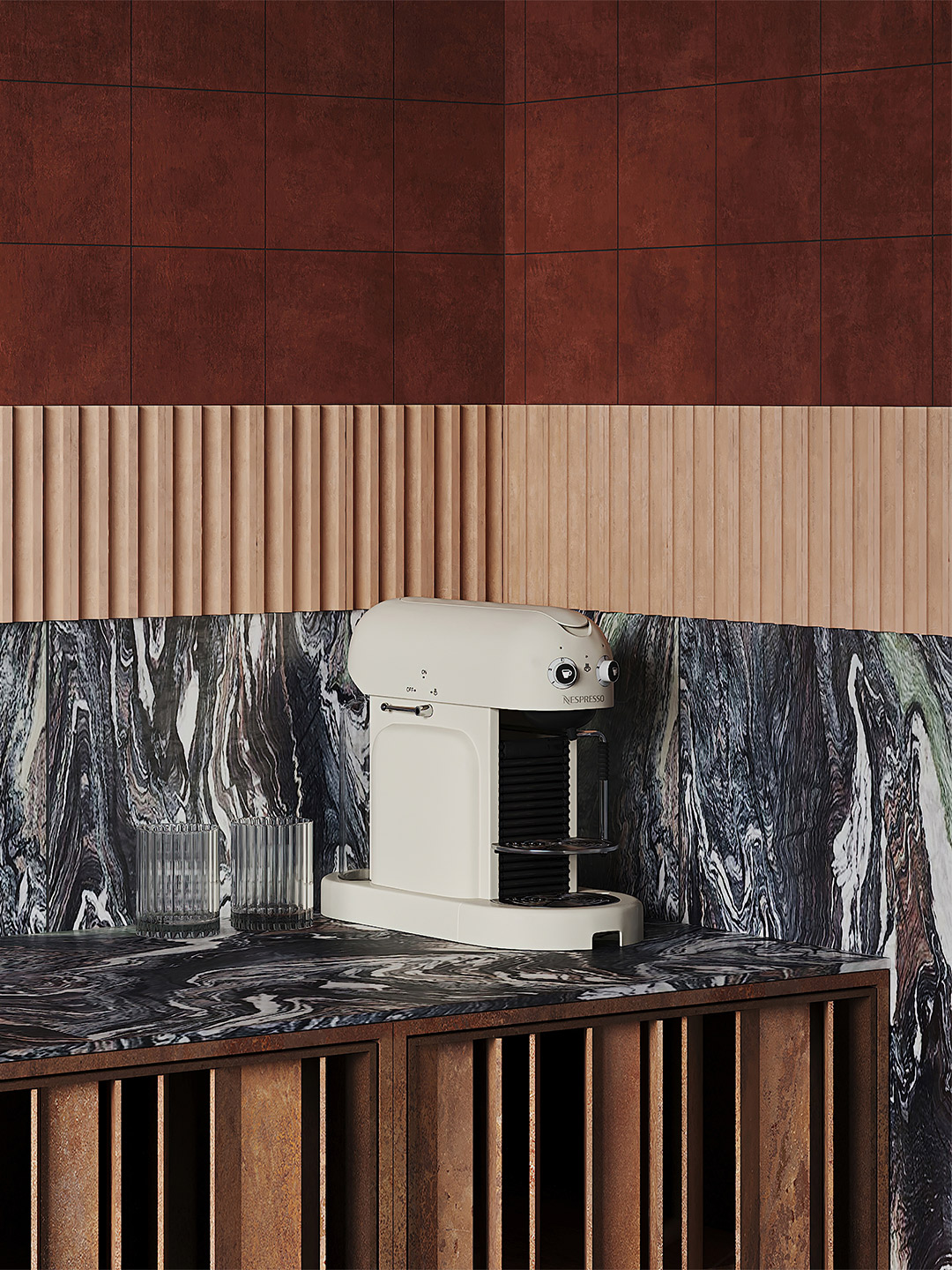
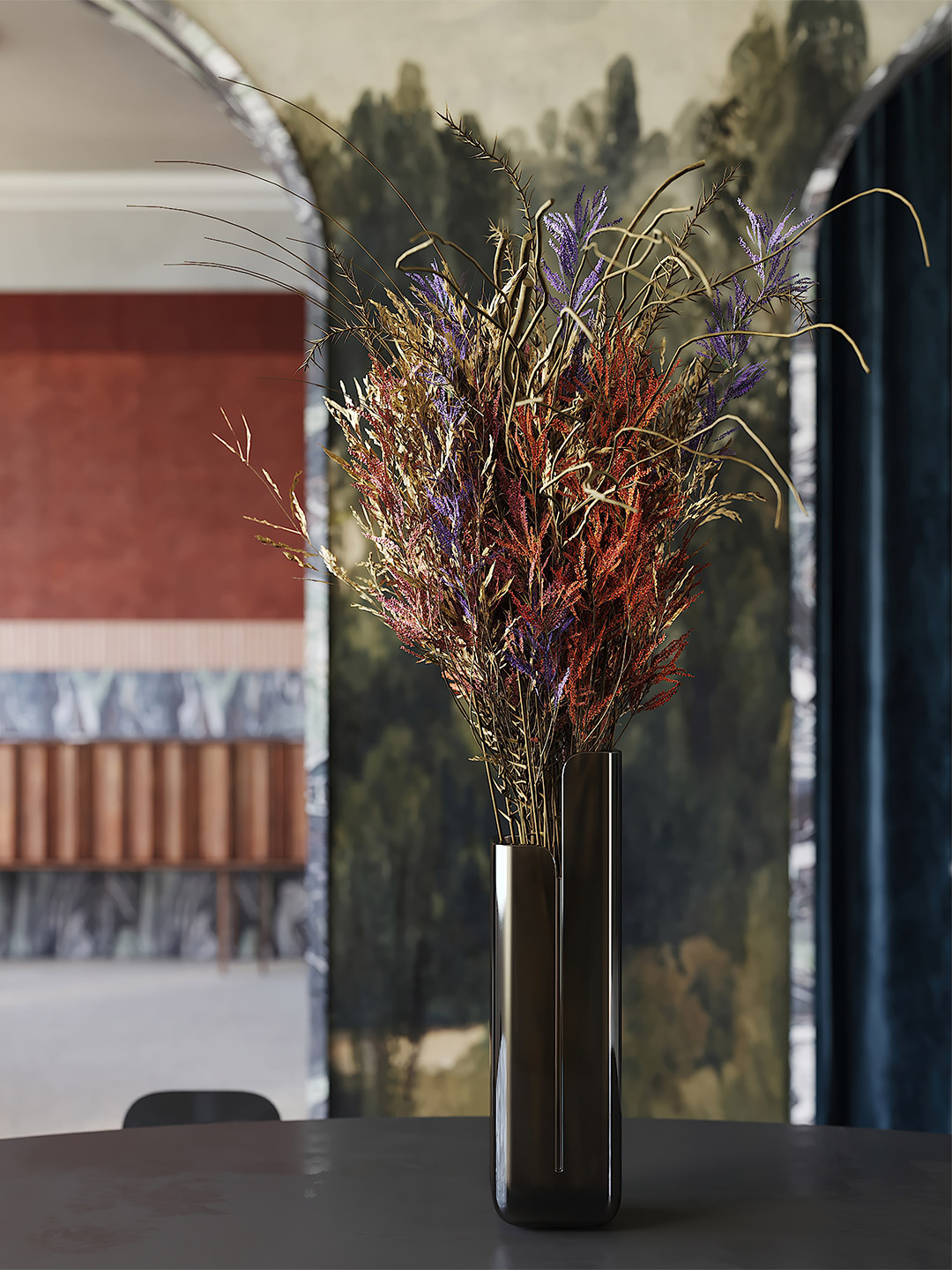
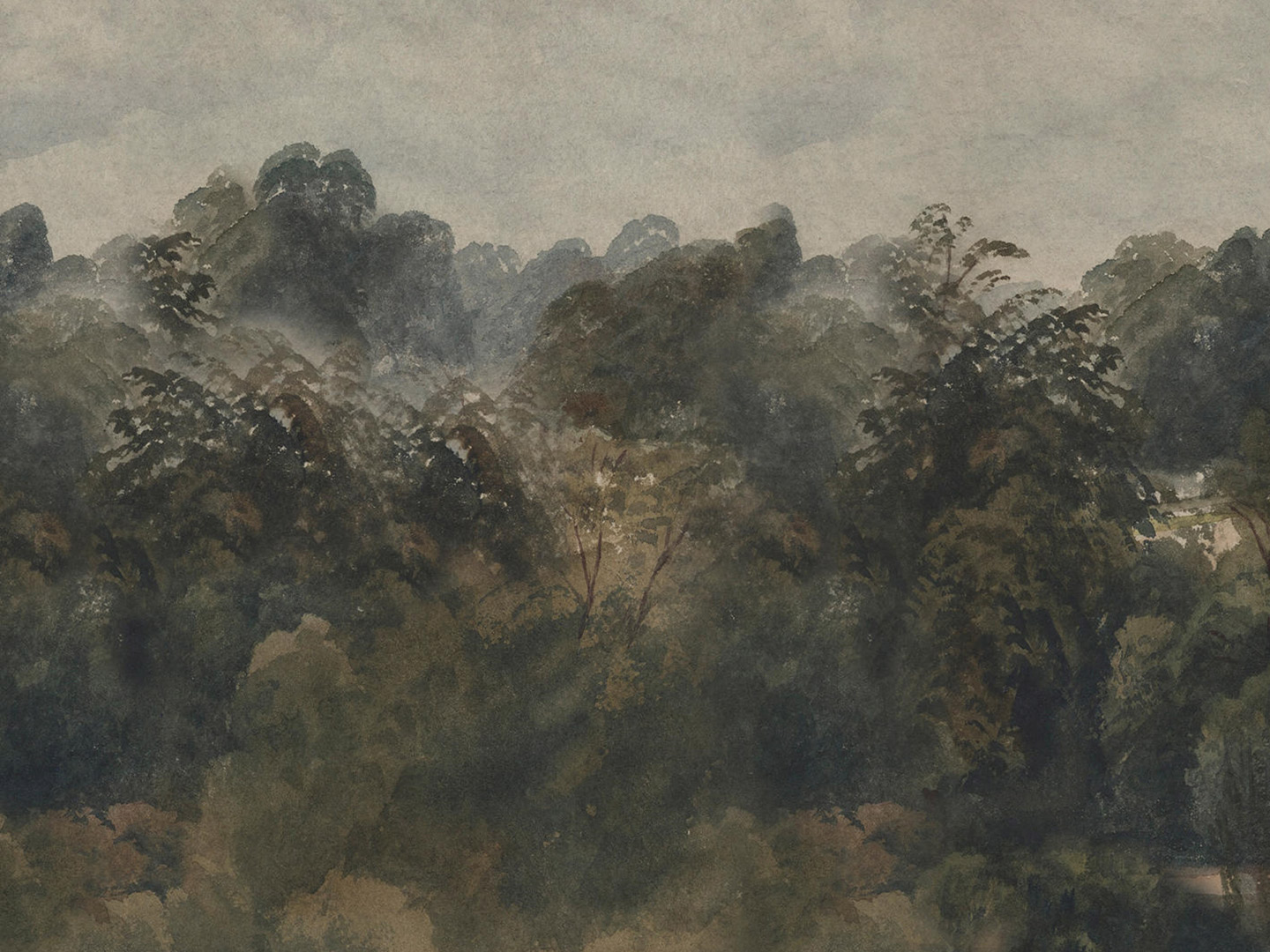
Foster + Partners also designed Apple Central World in the beating heart of Bangkok. Catch up on more architecture and design highlights. Plus, subscribe to receive the Daily Architecture News e-letter direct to your inbox.

